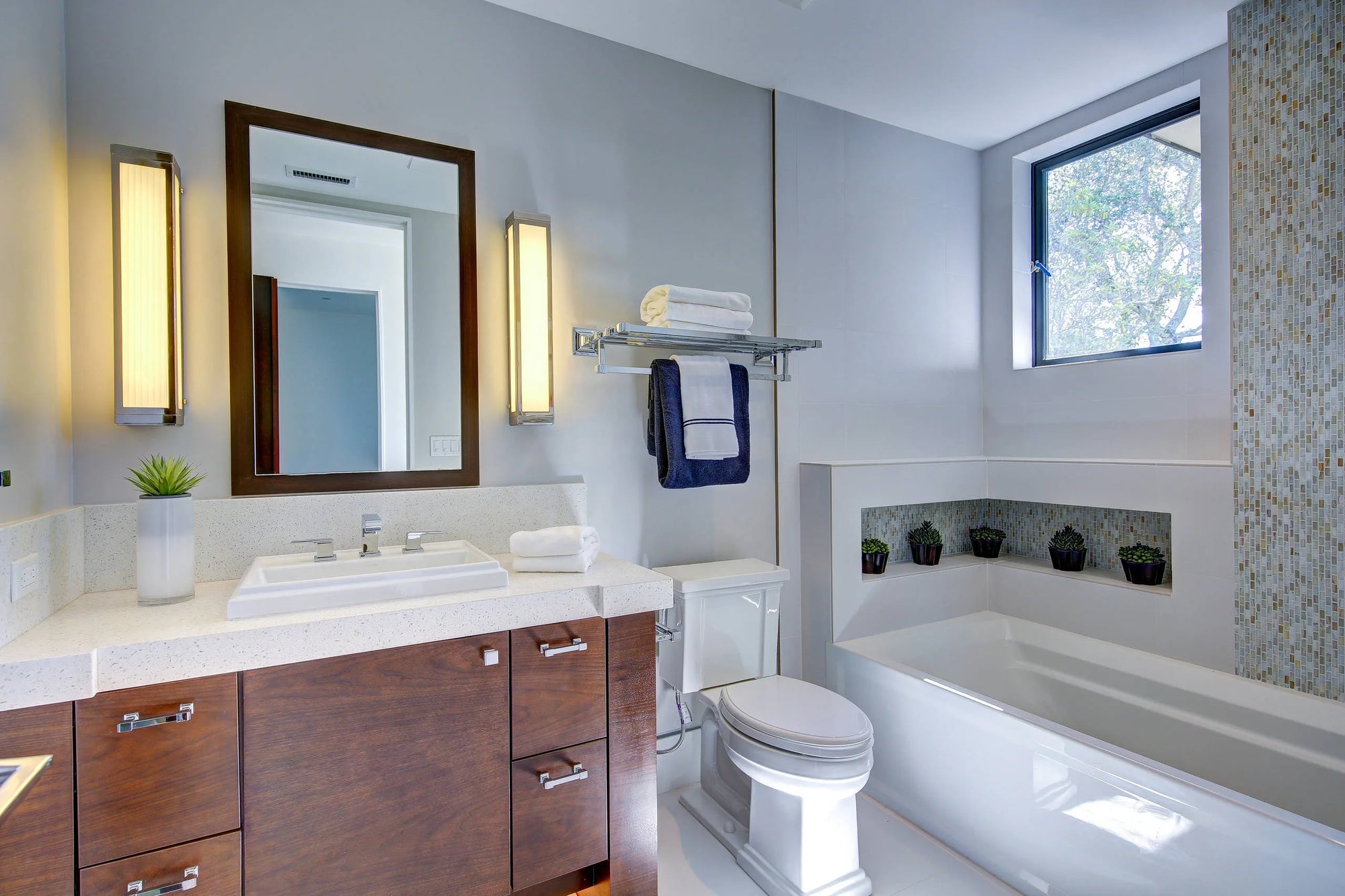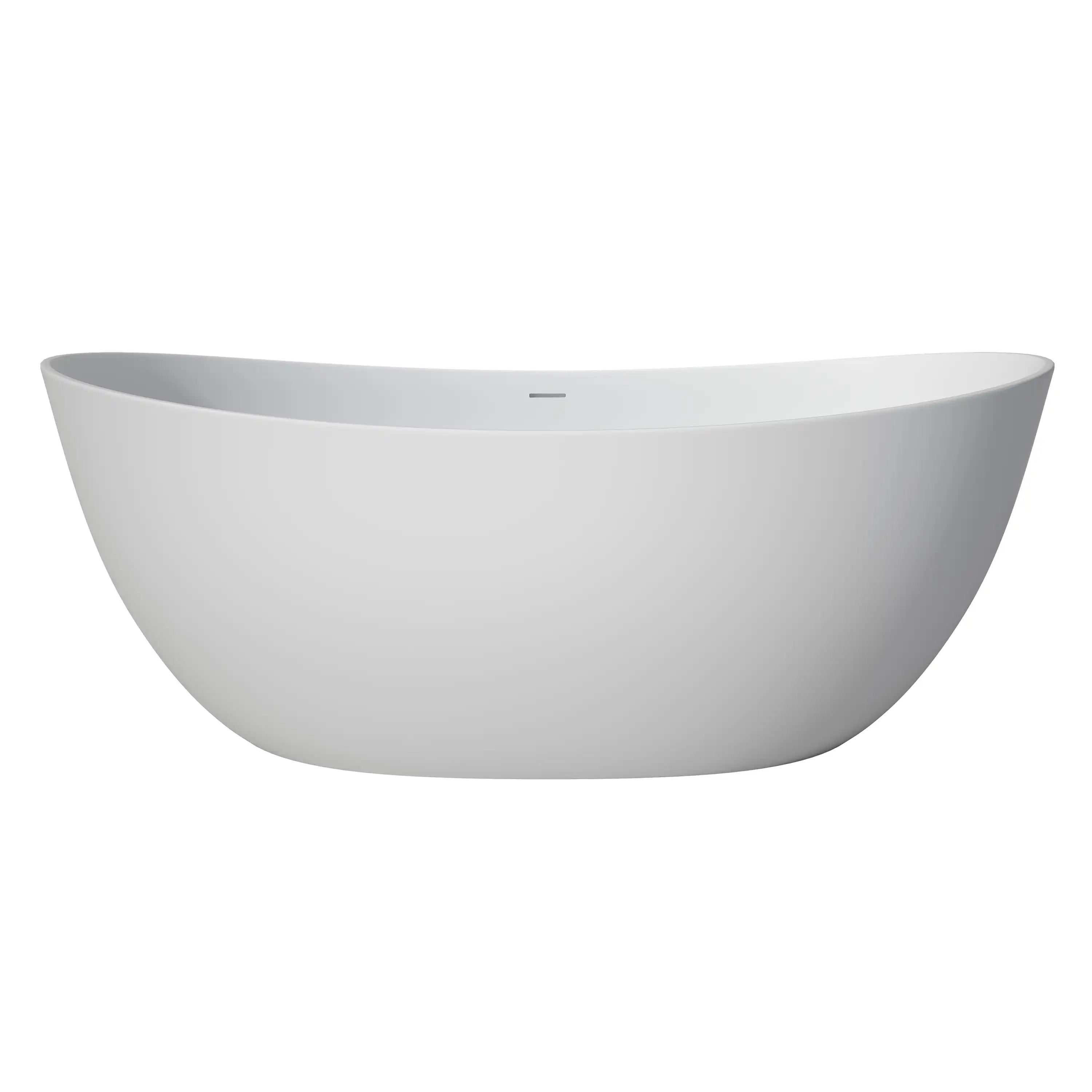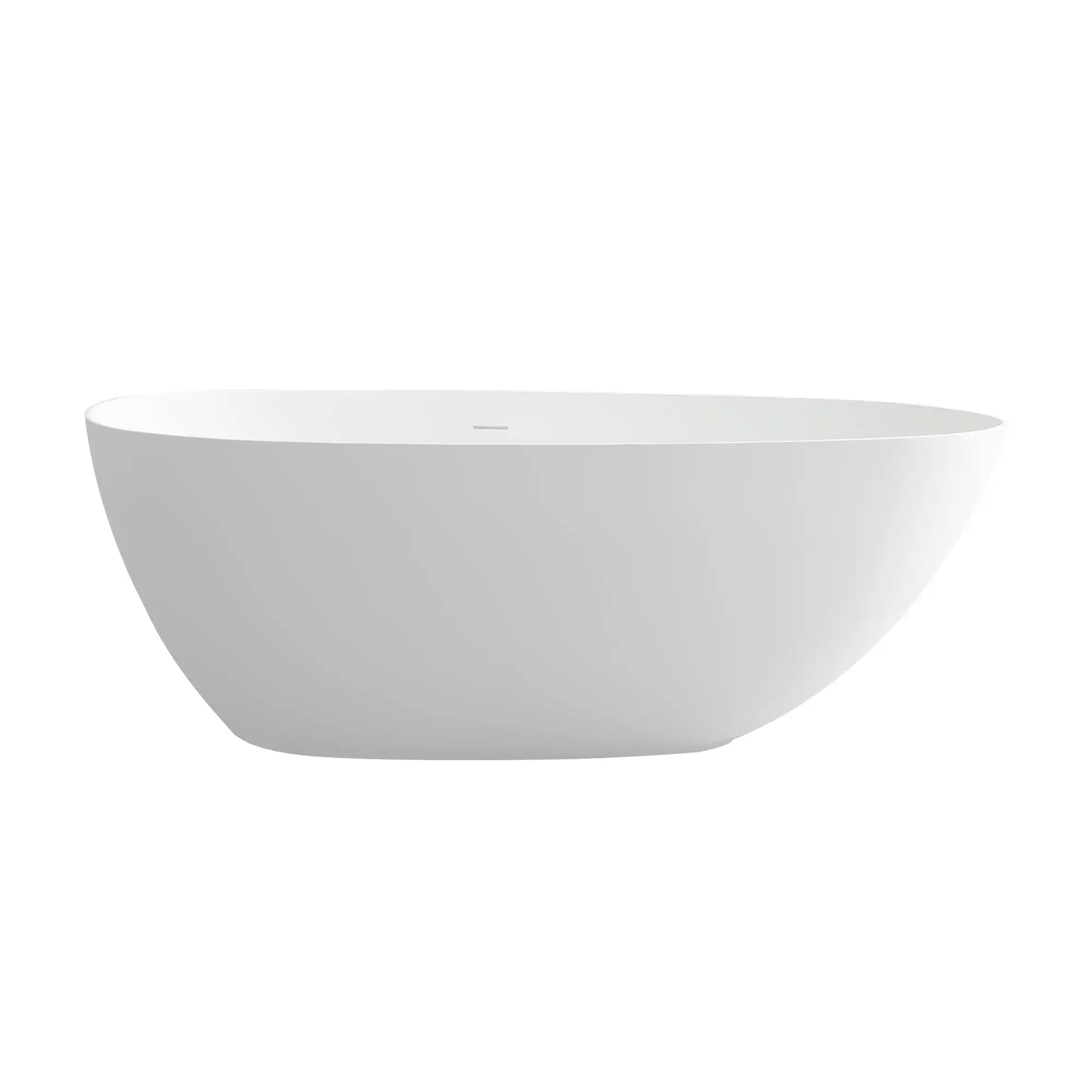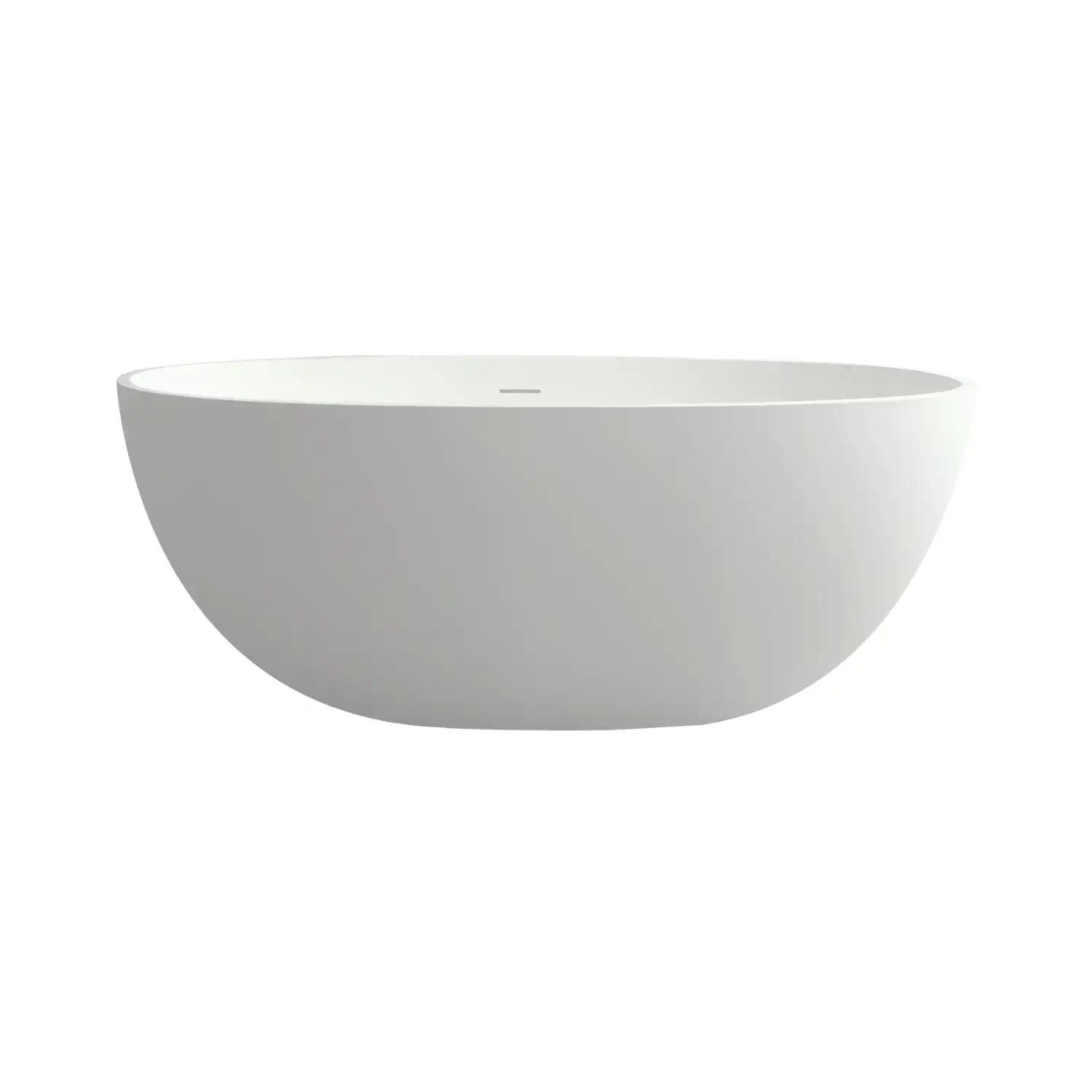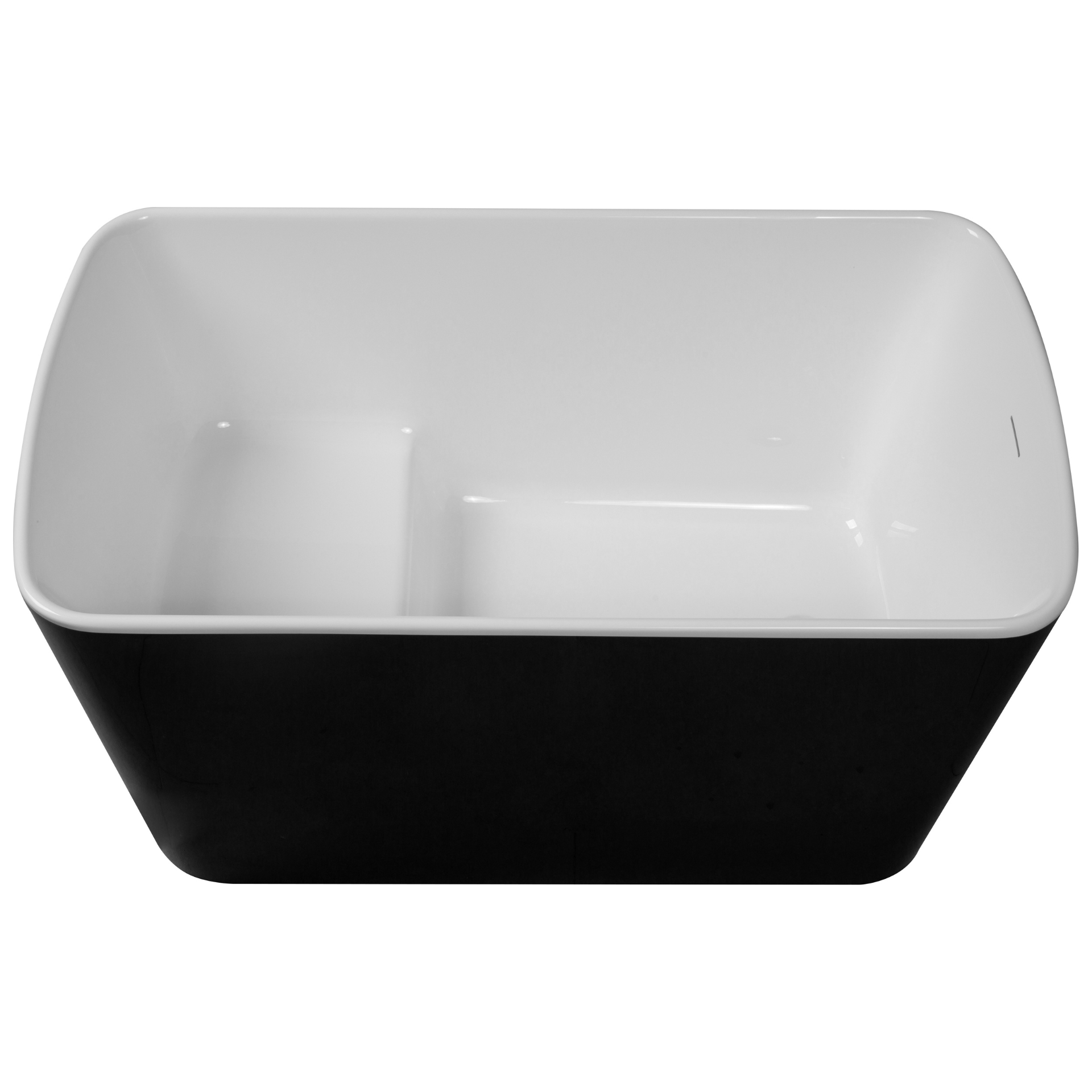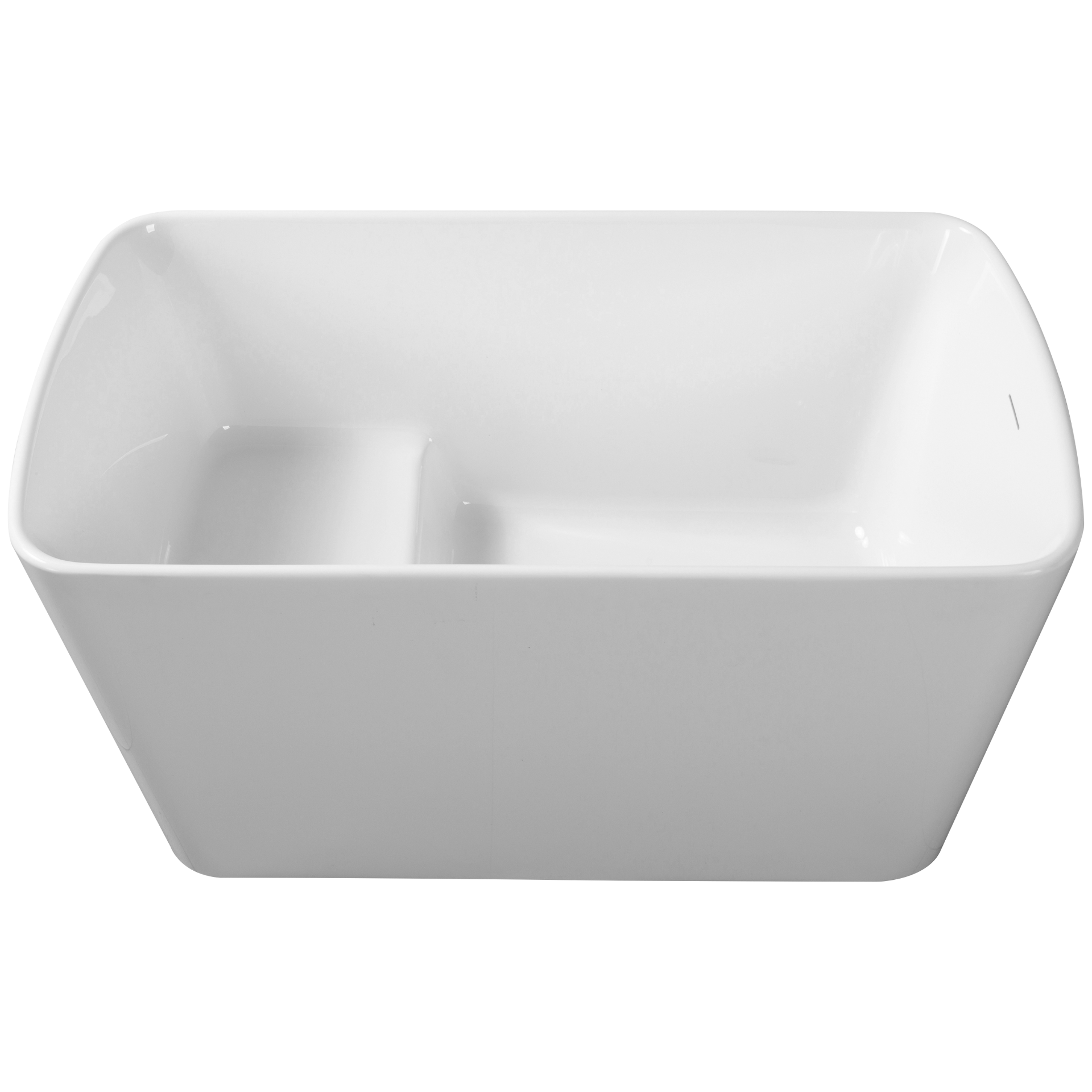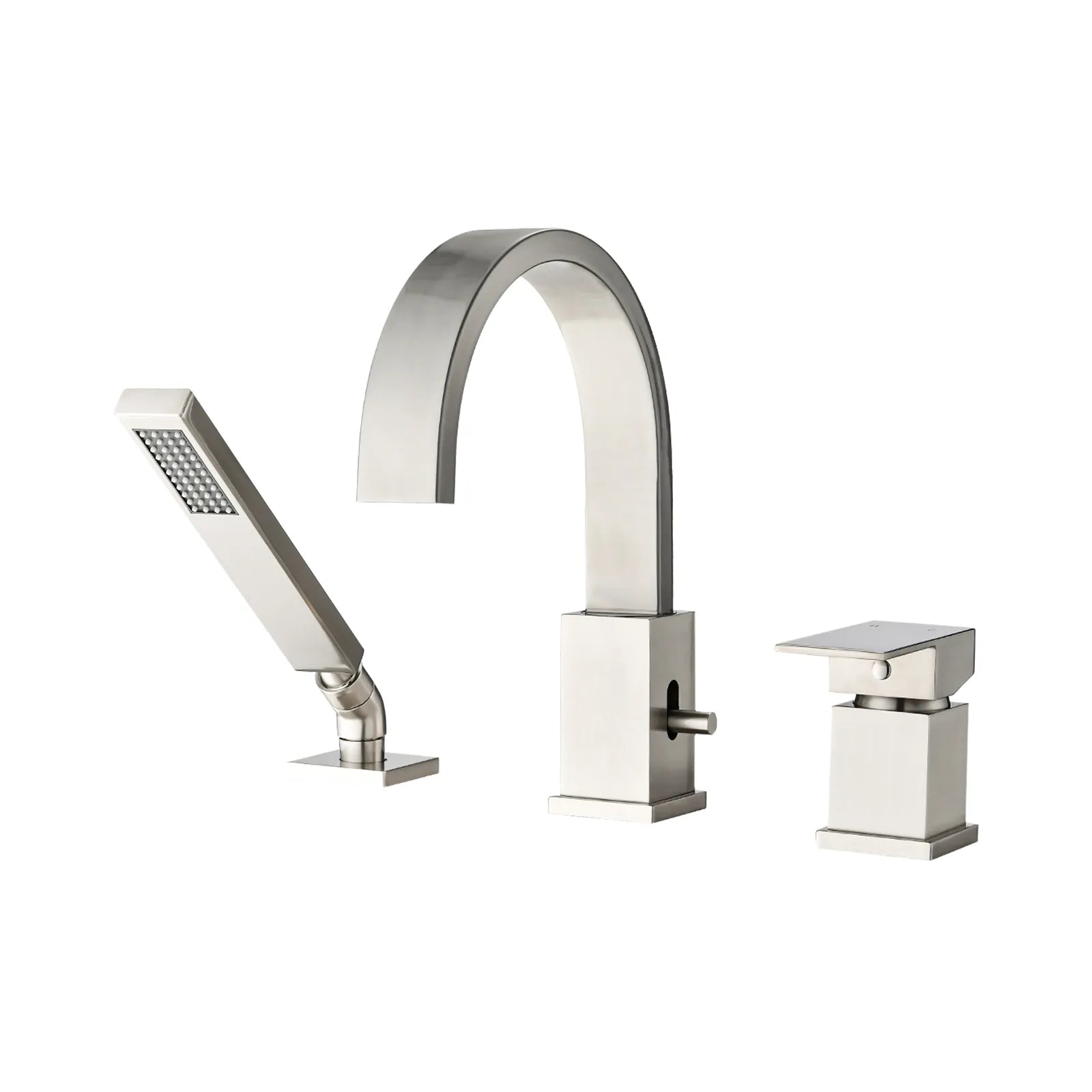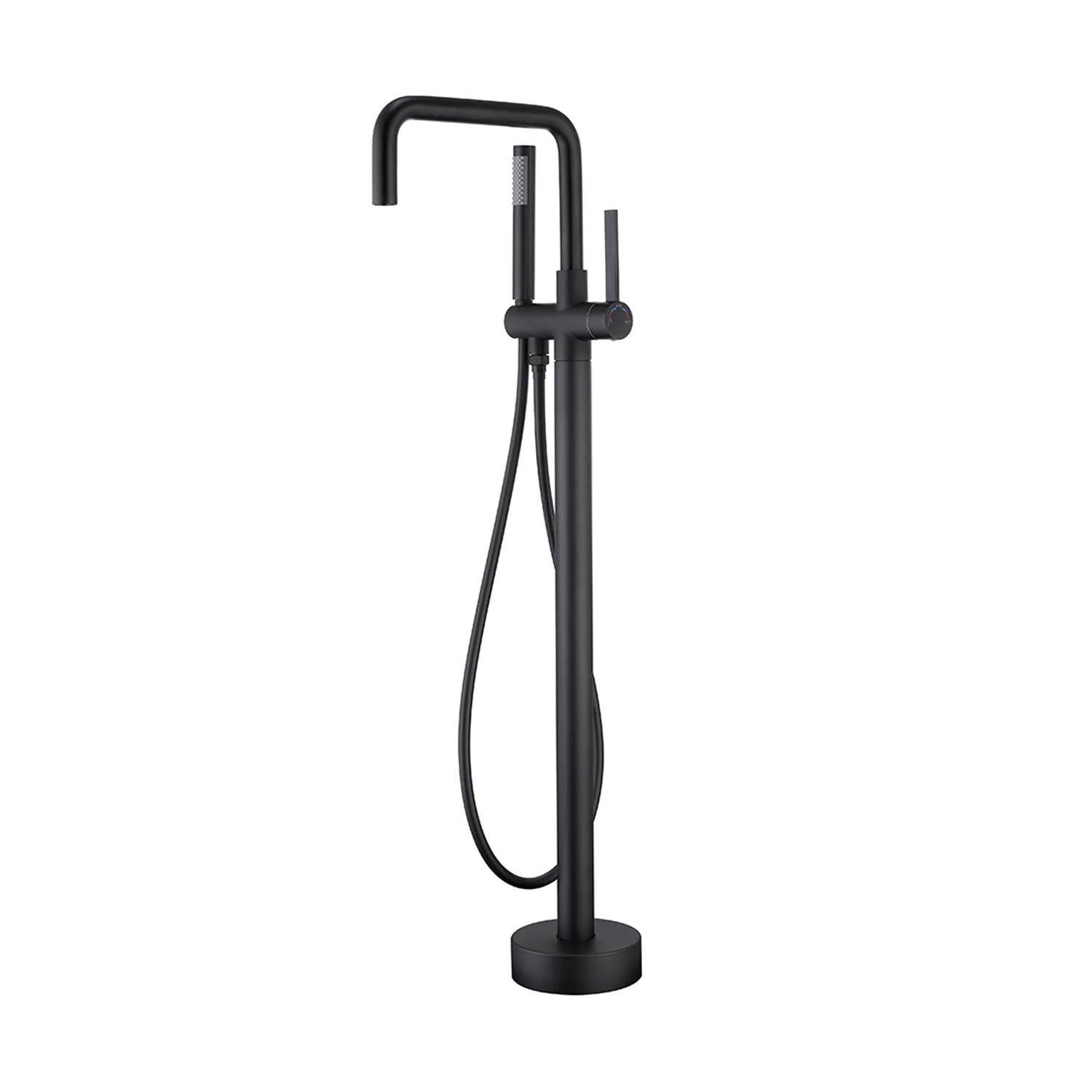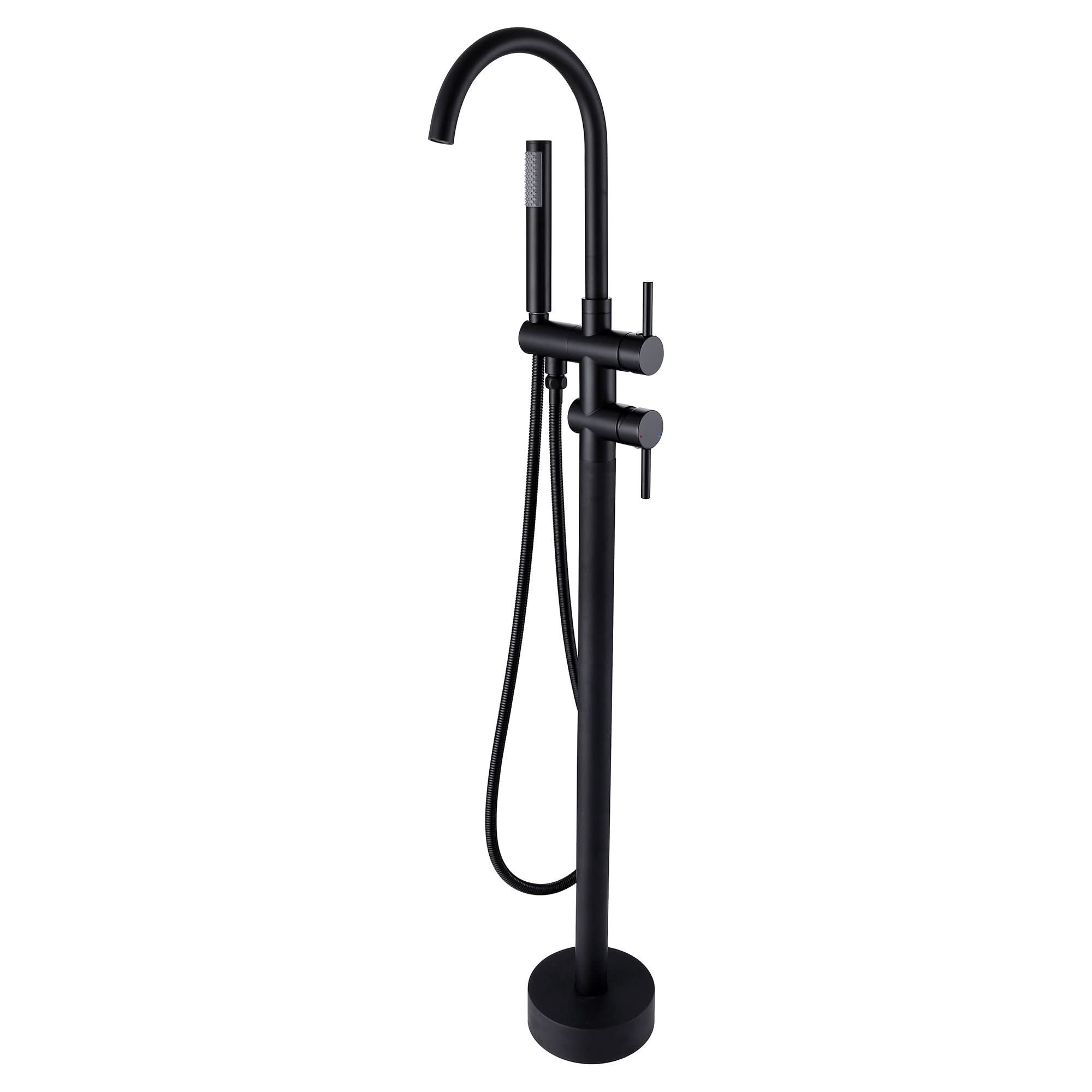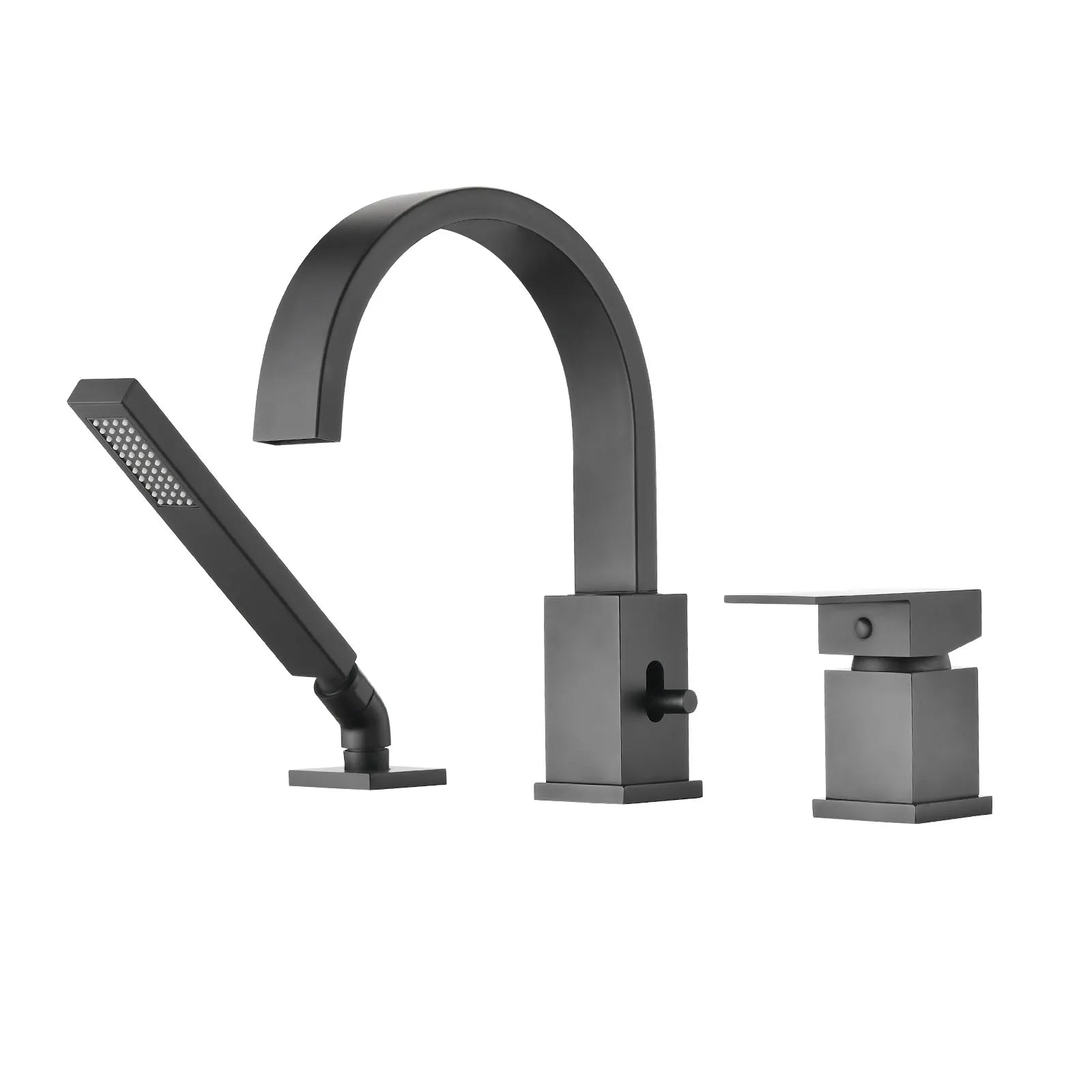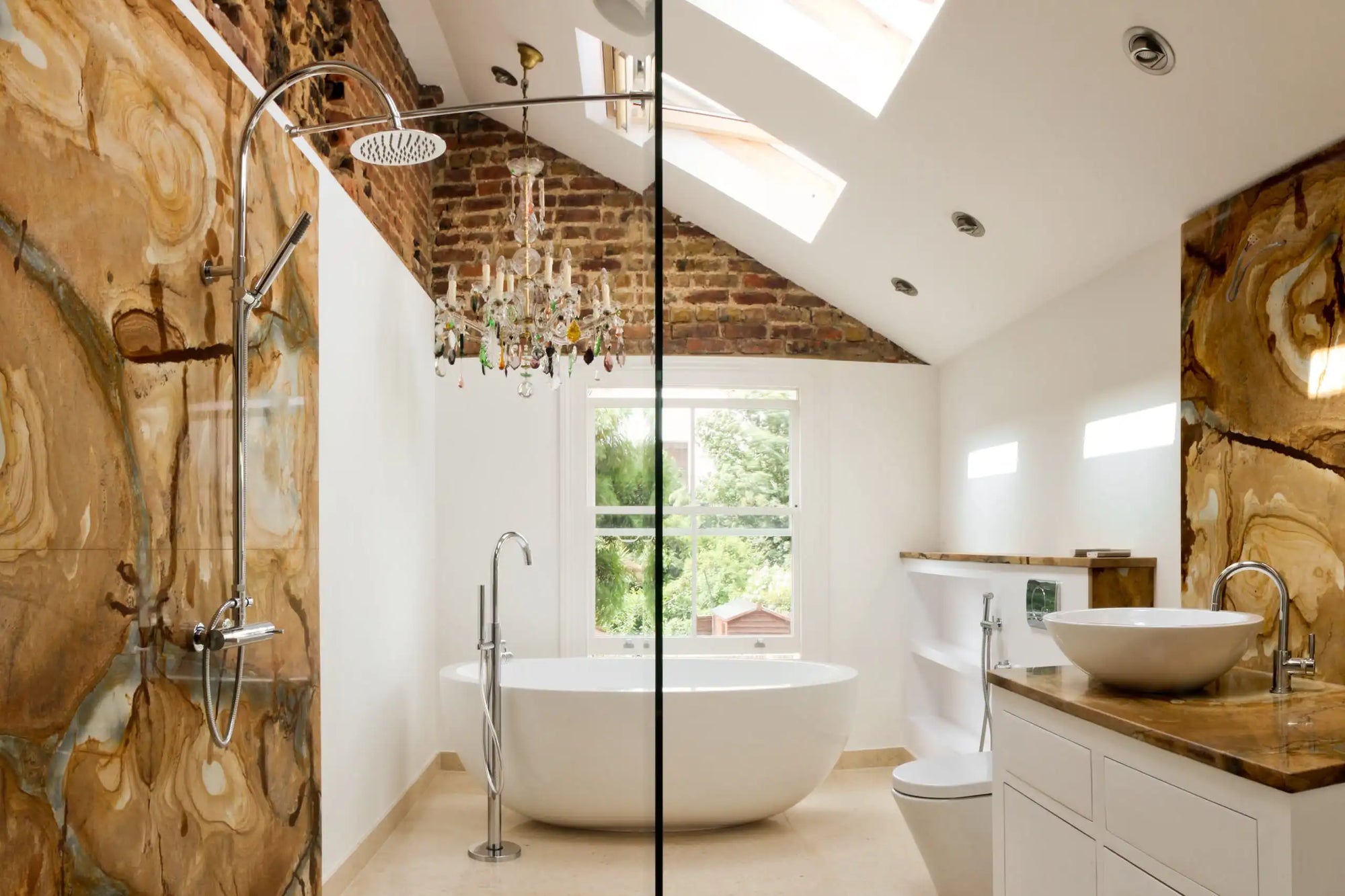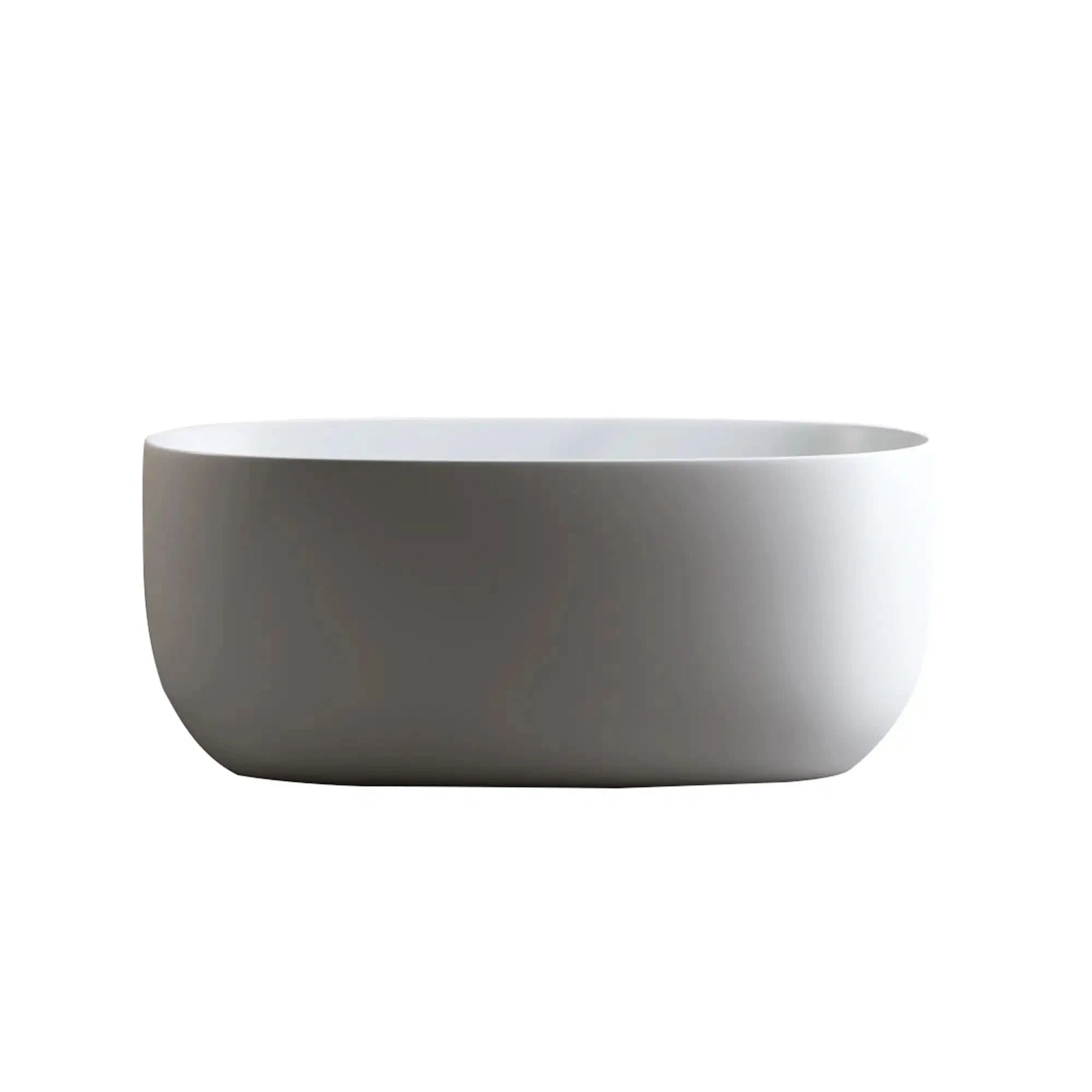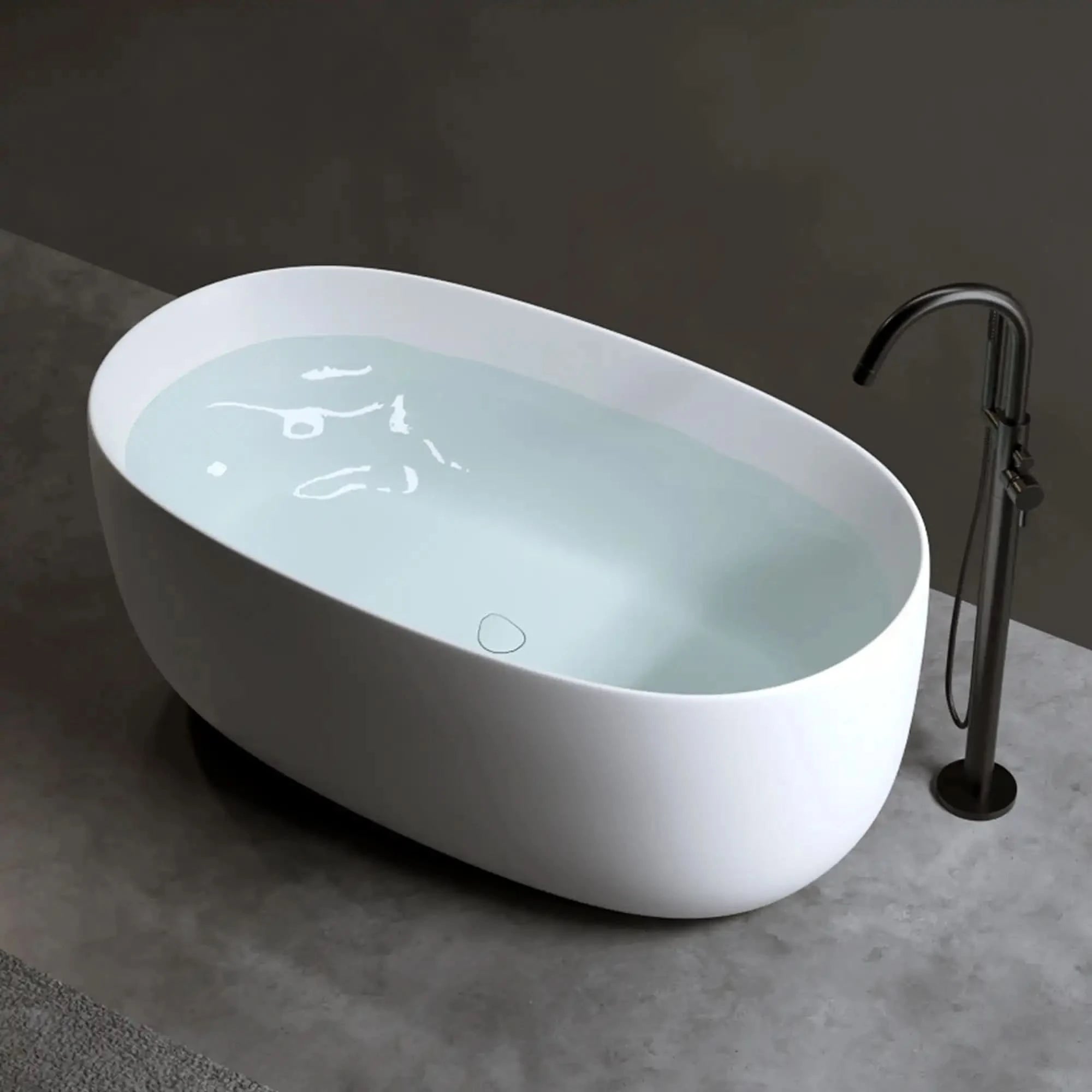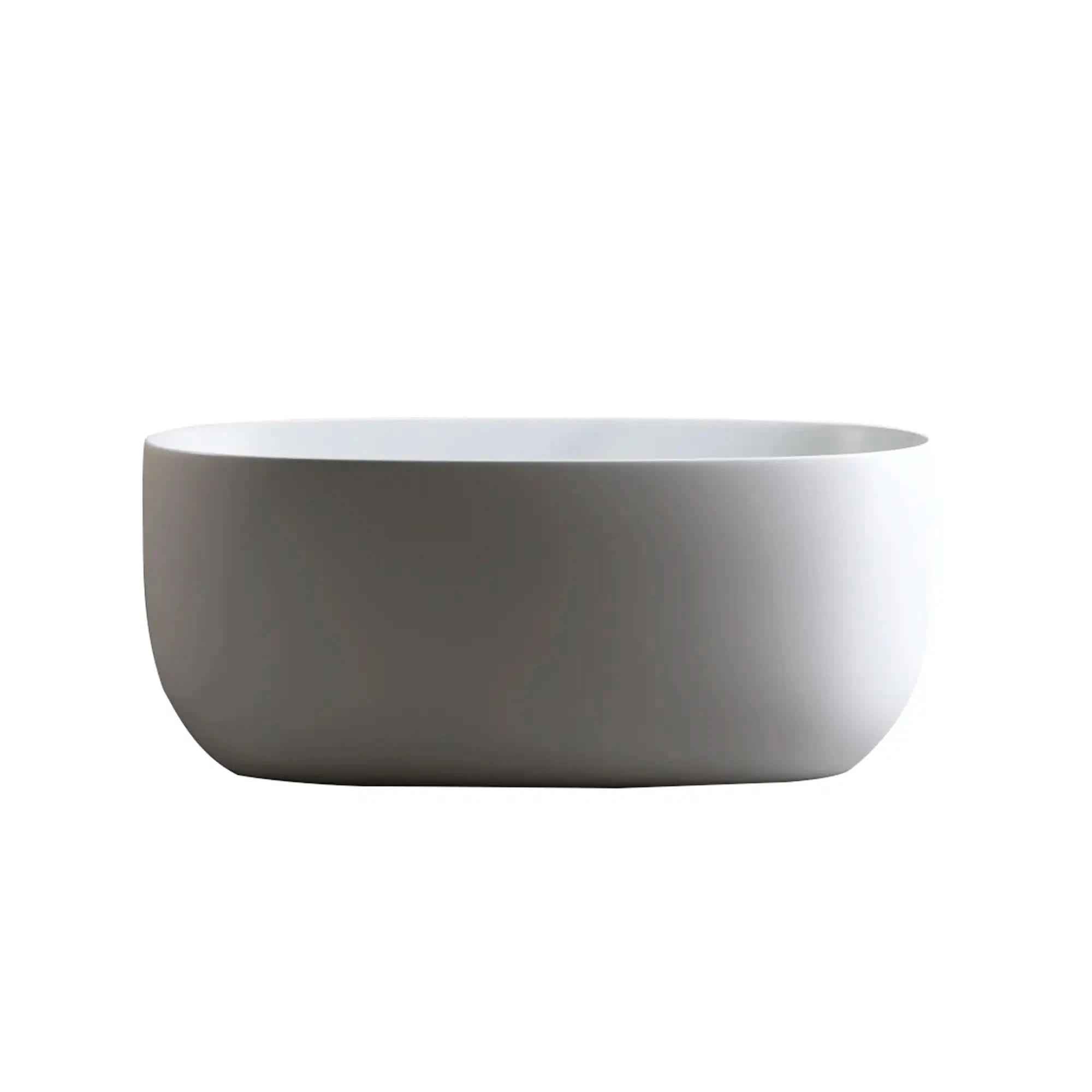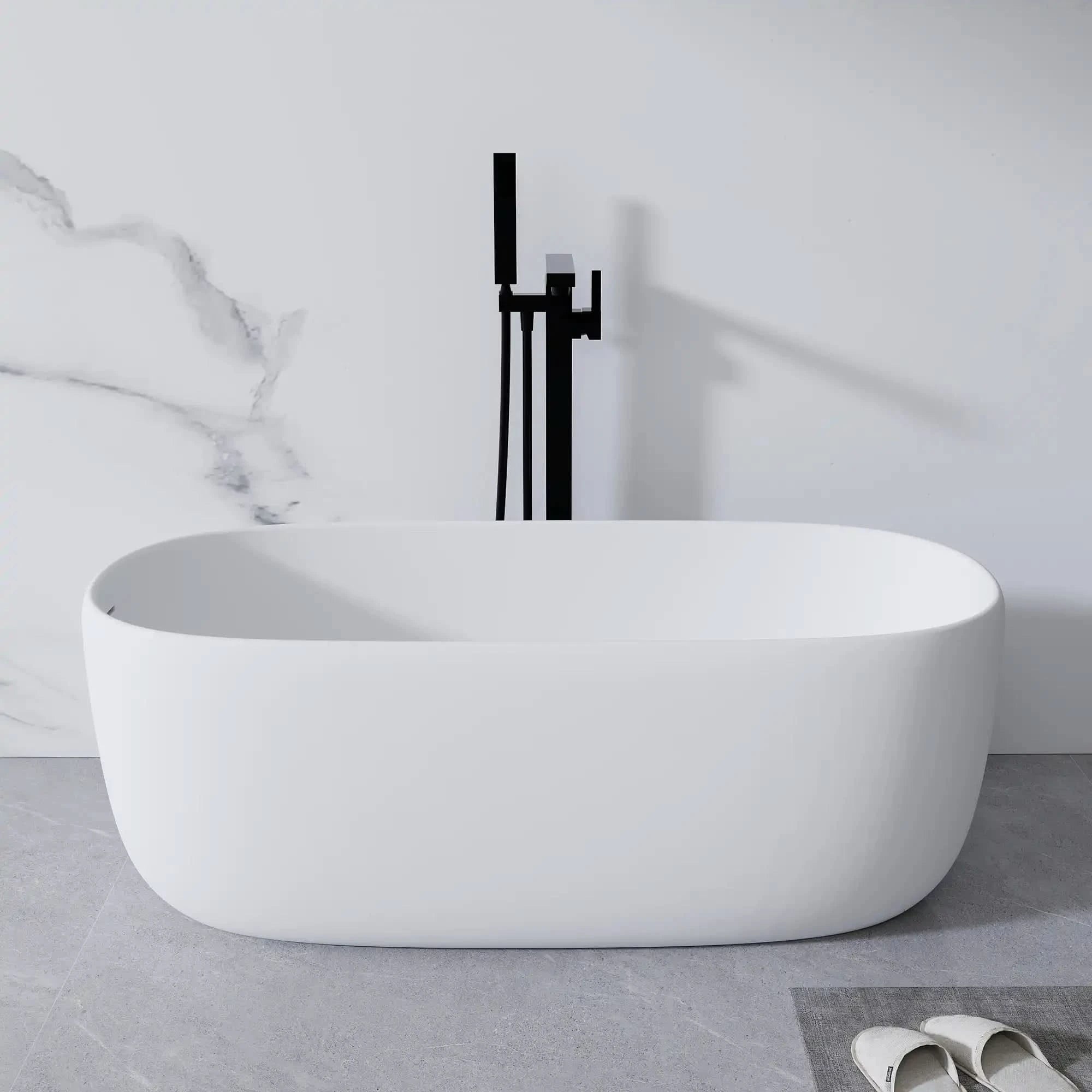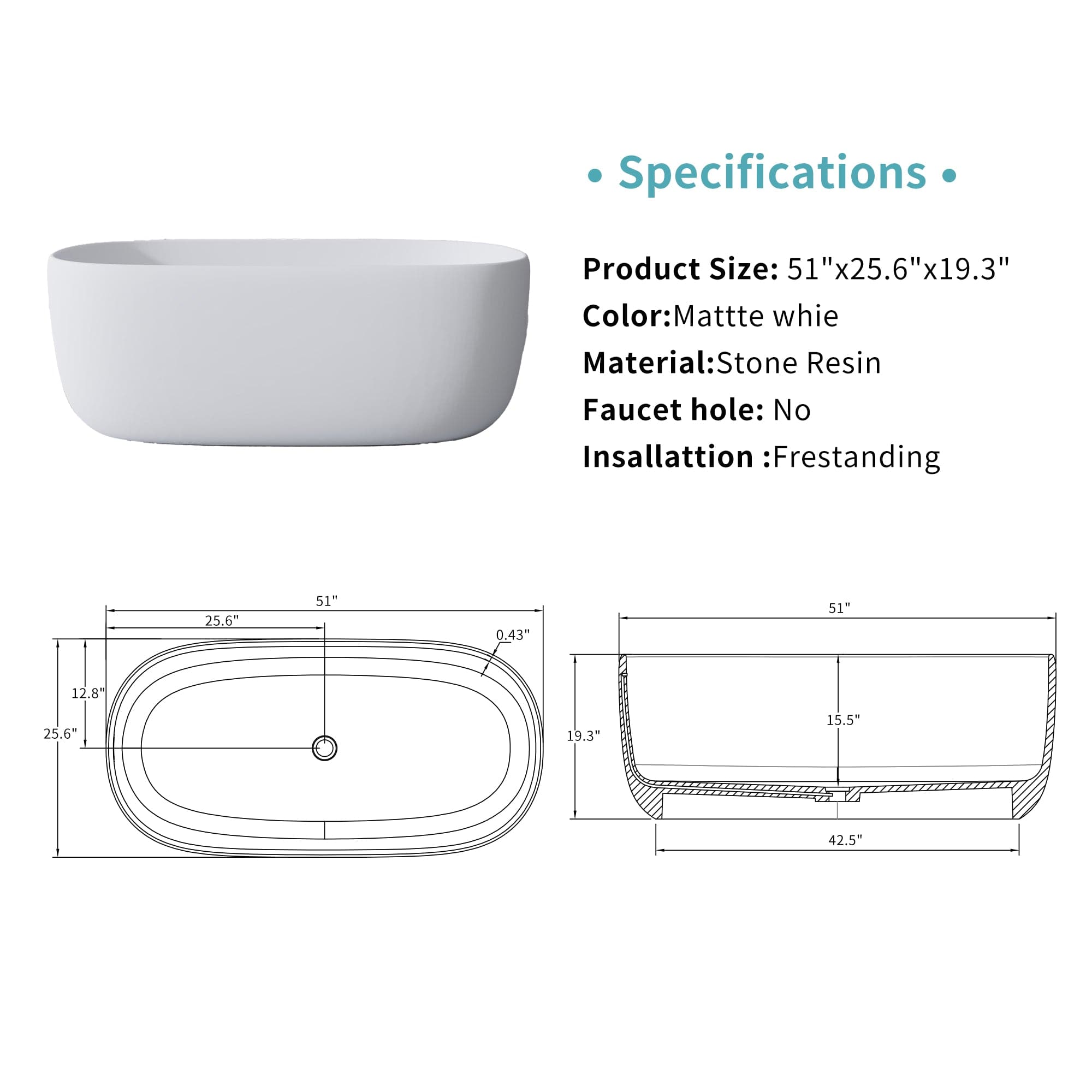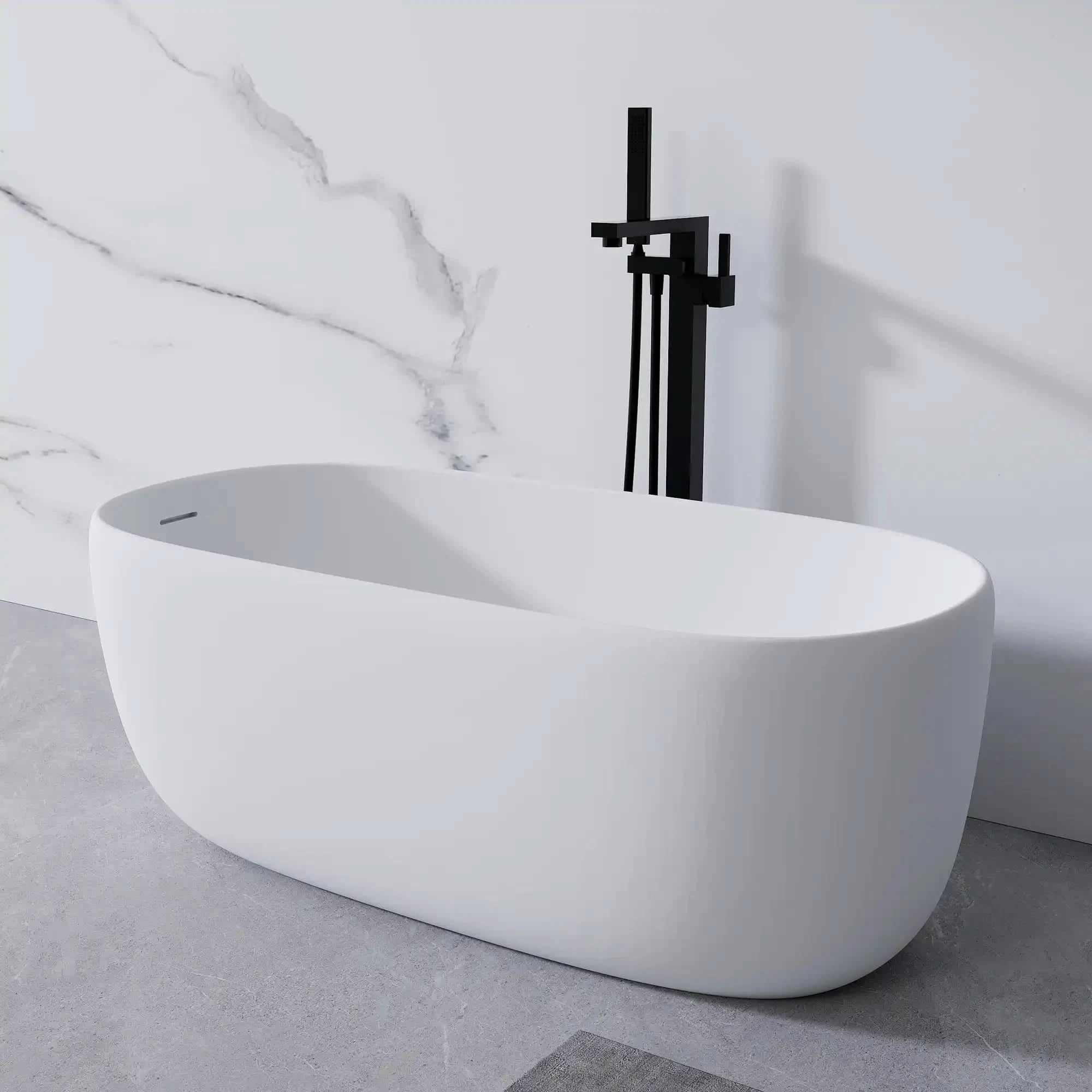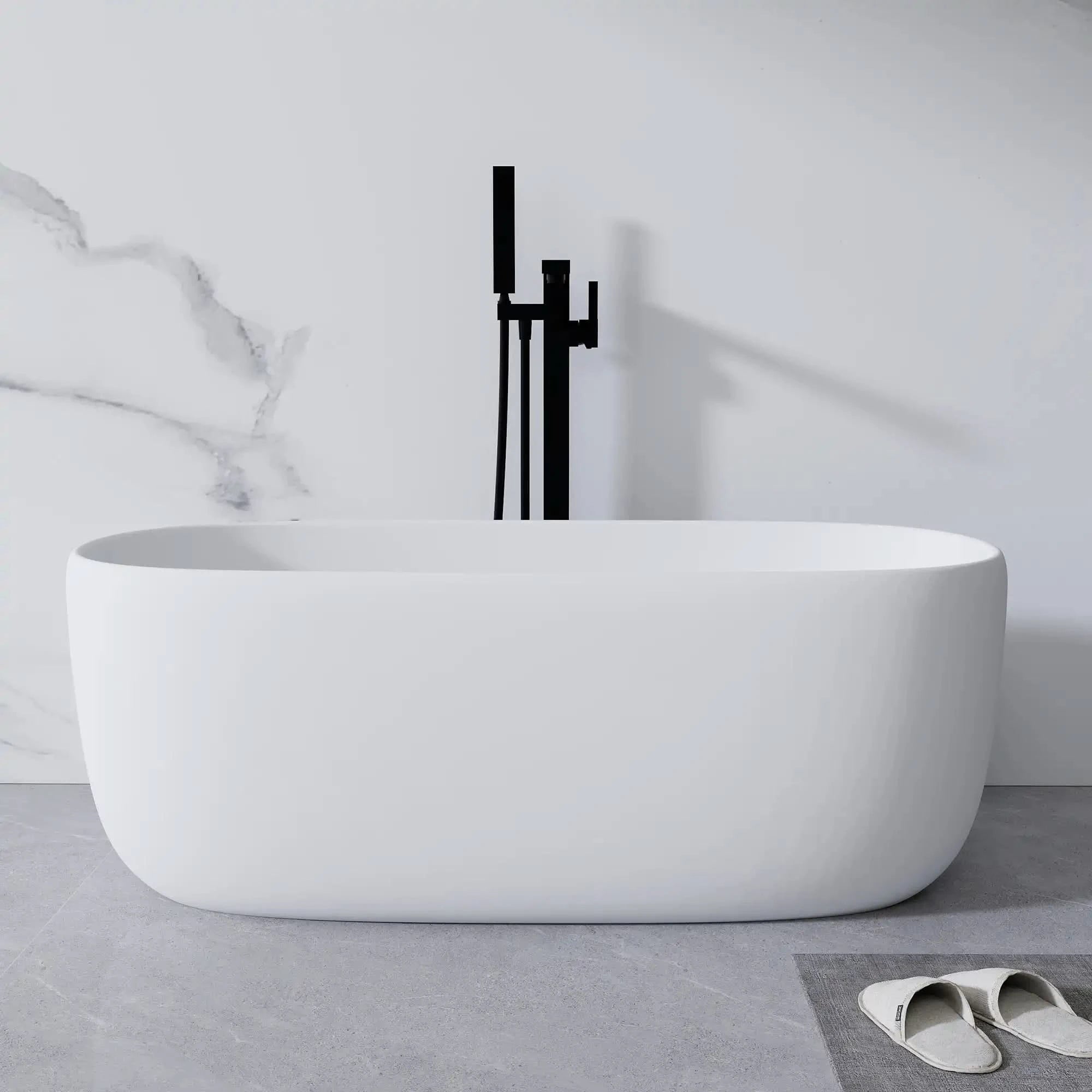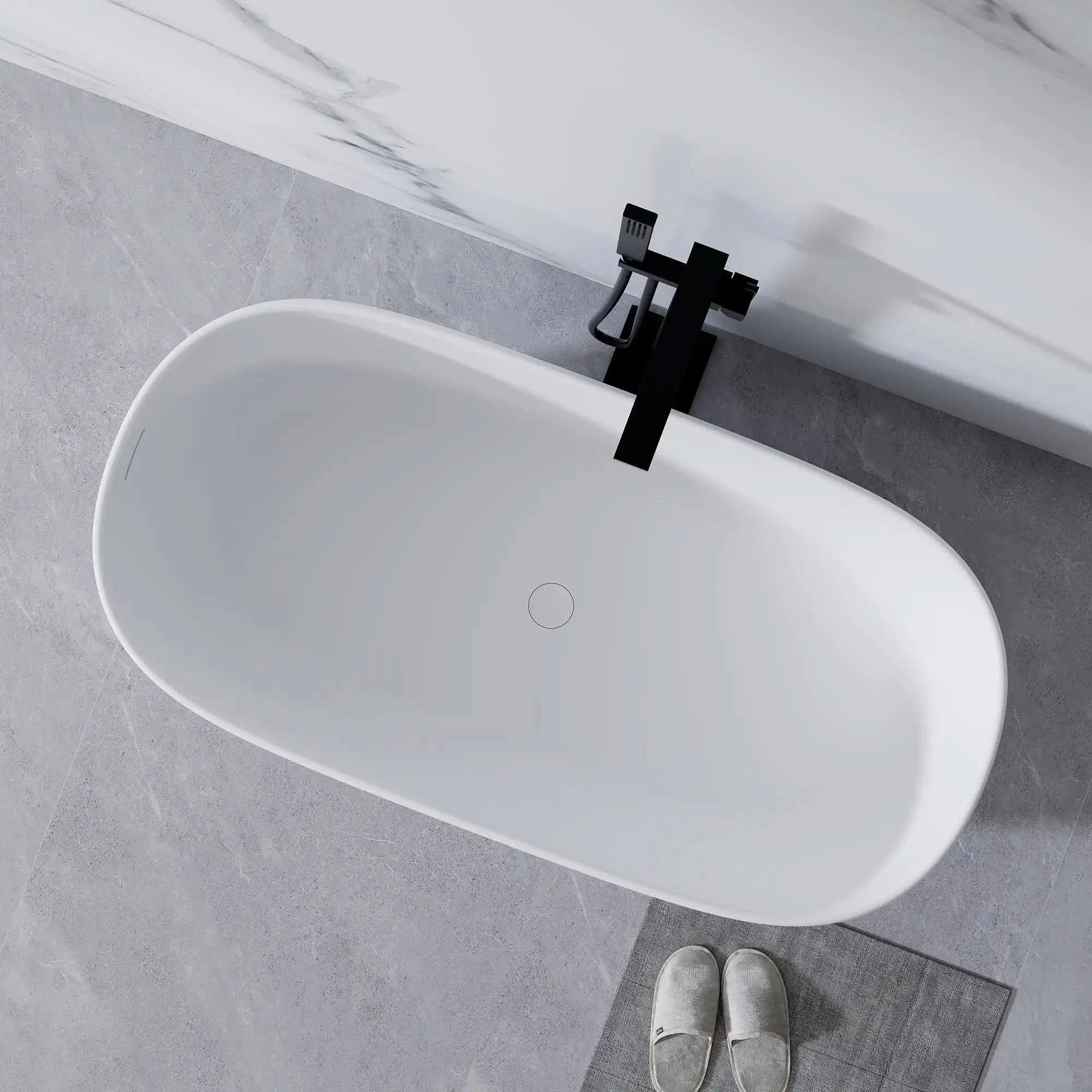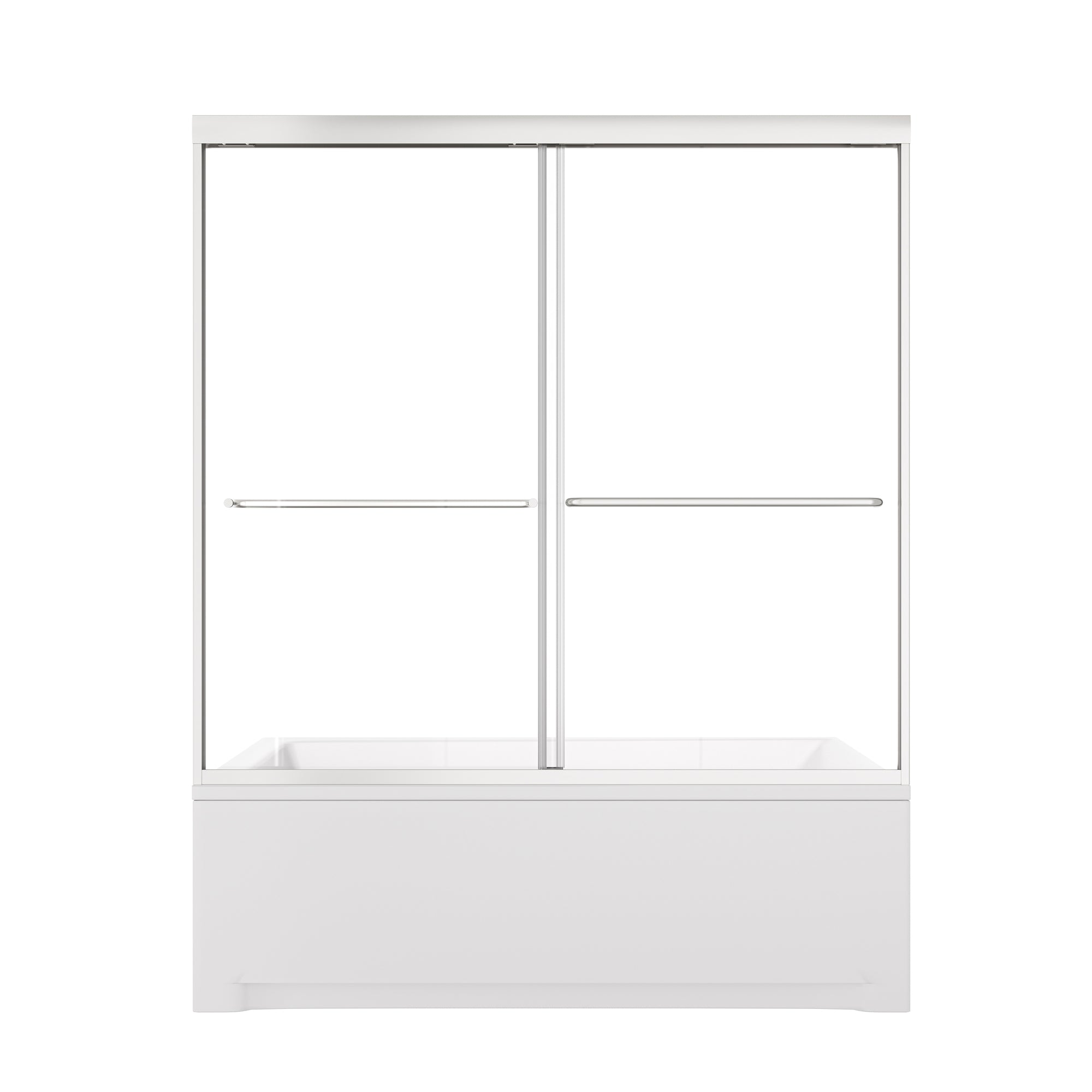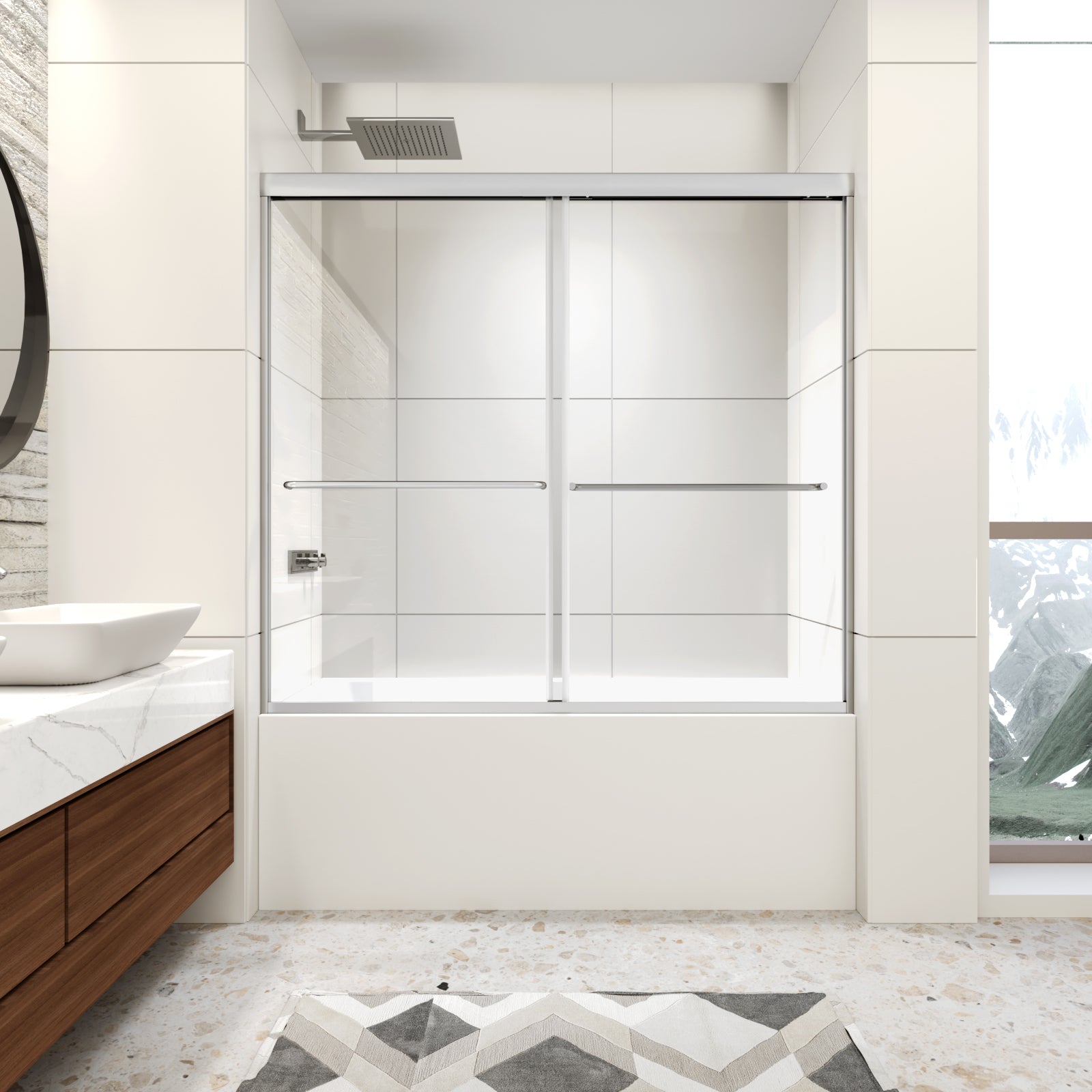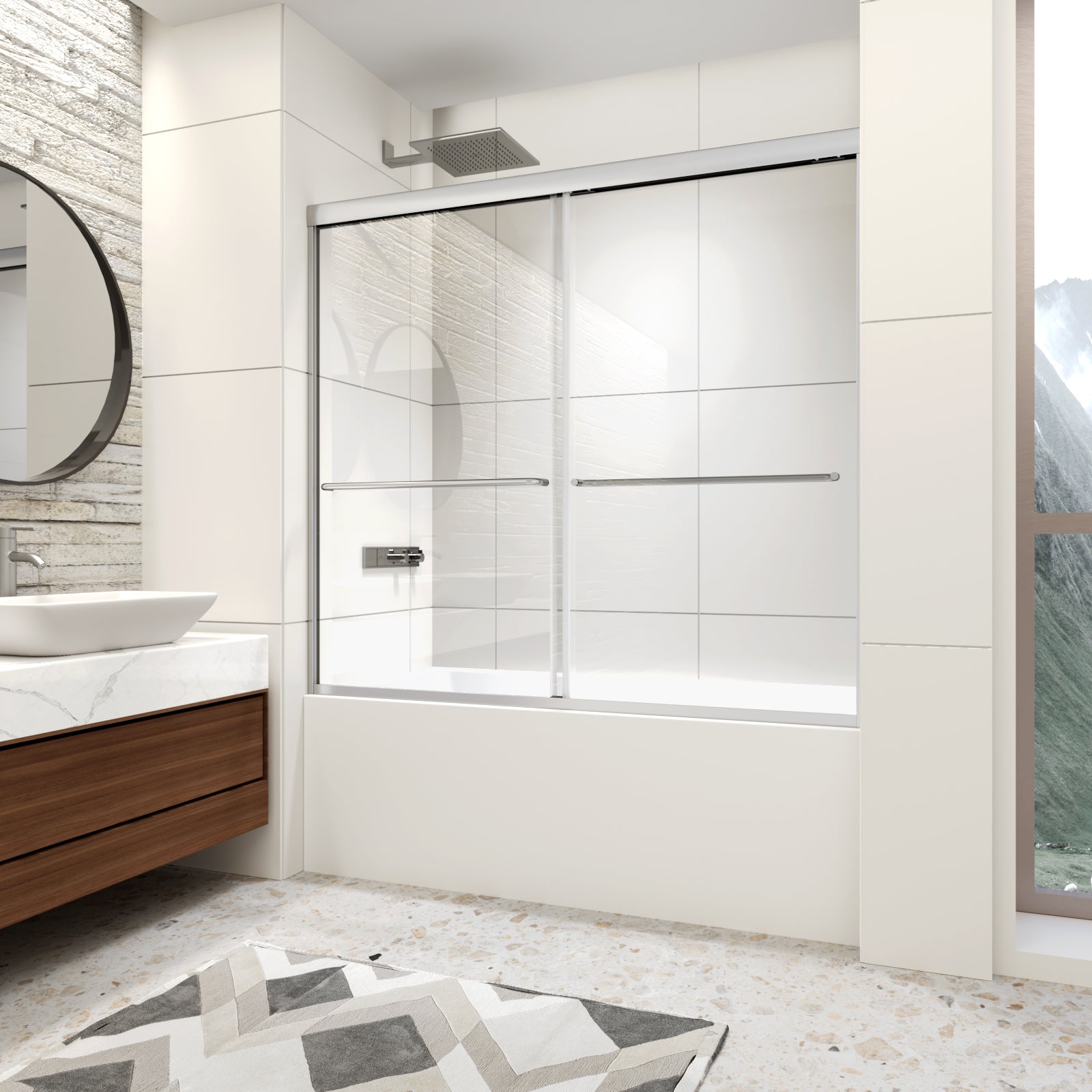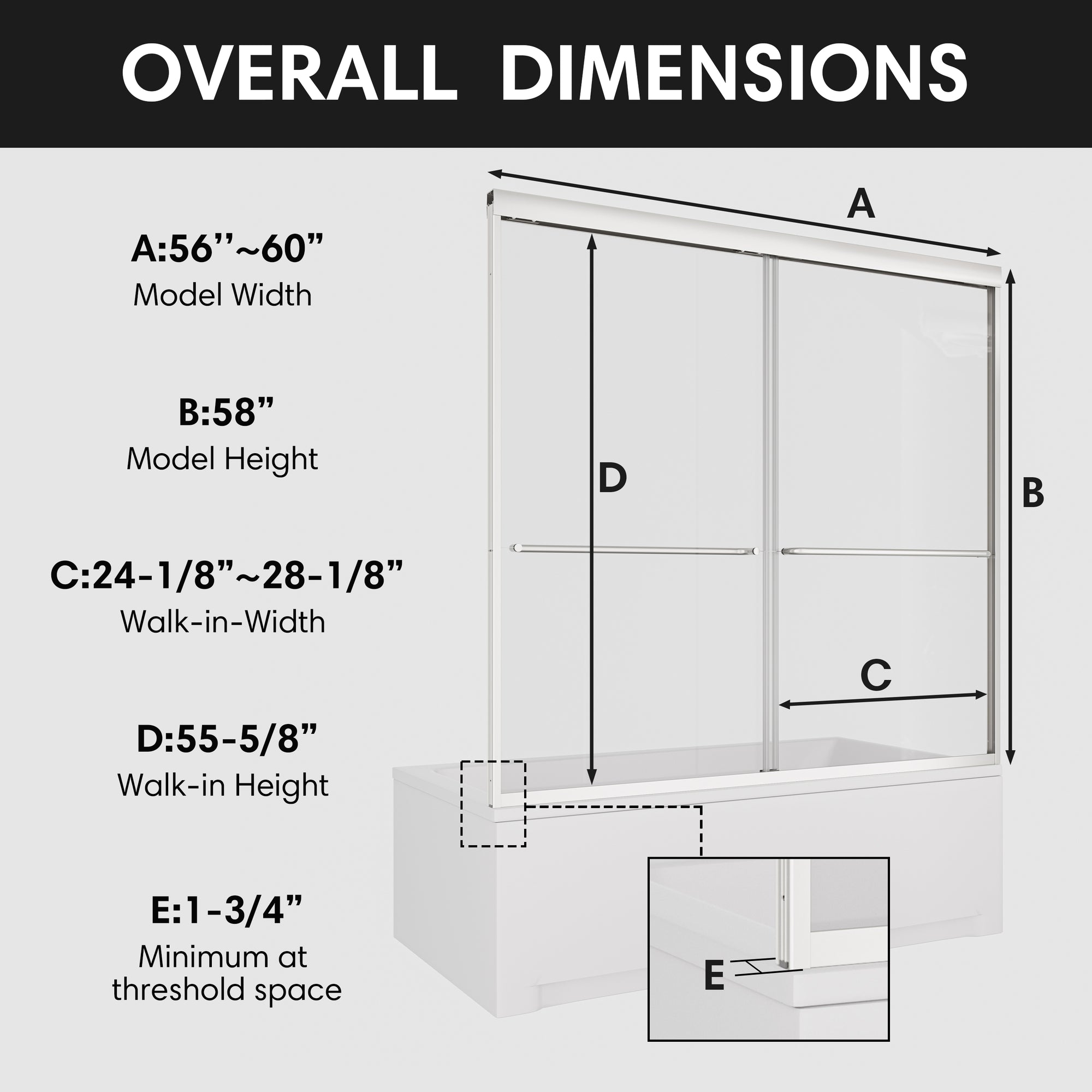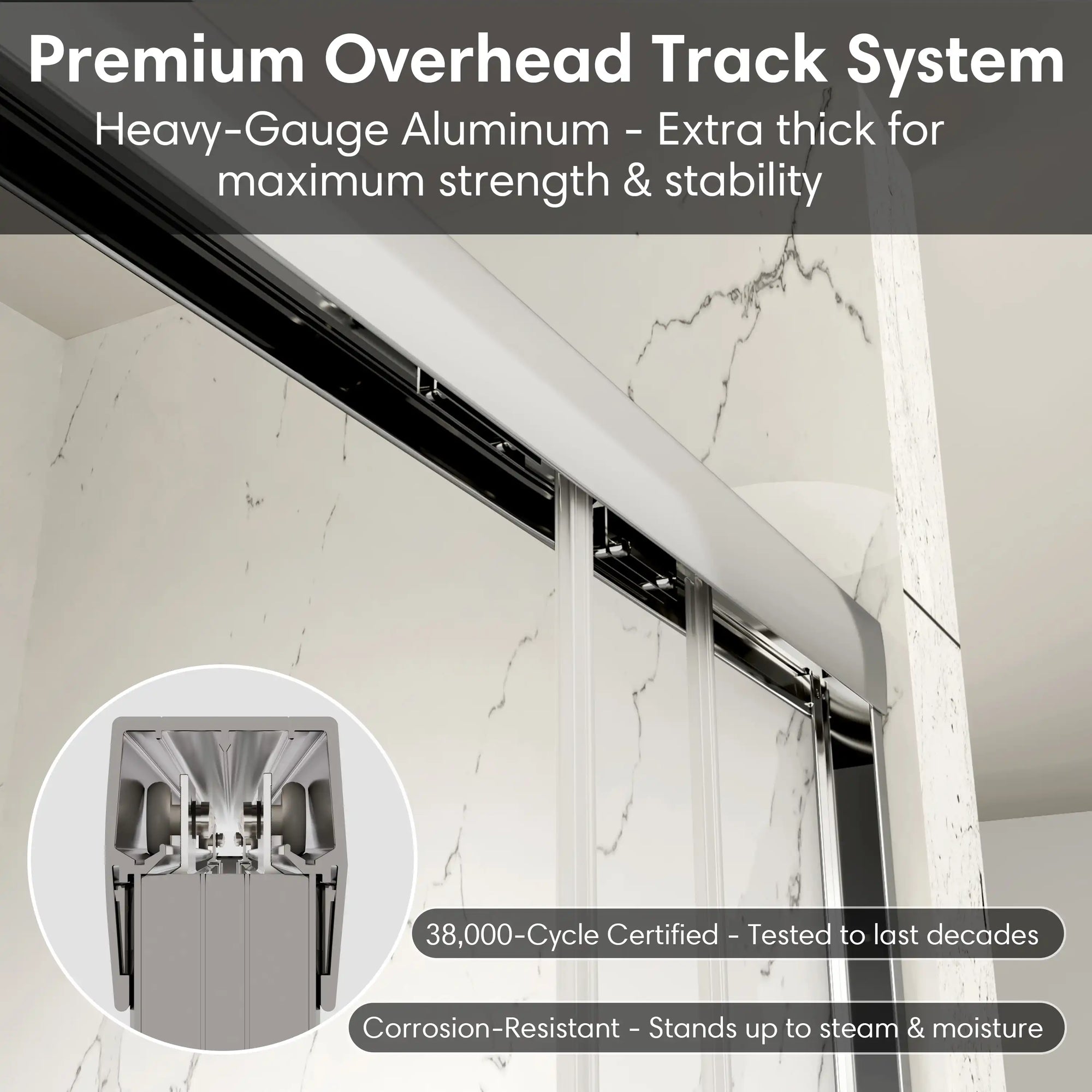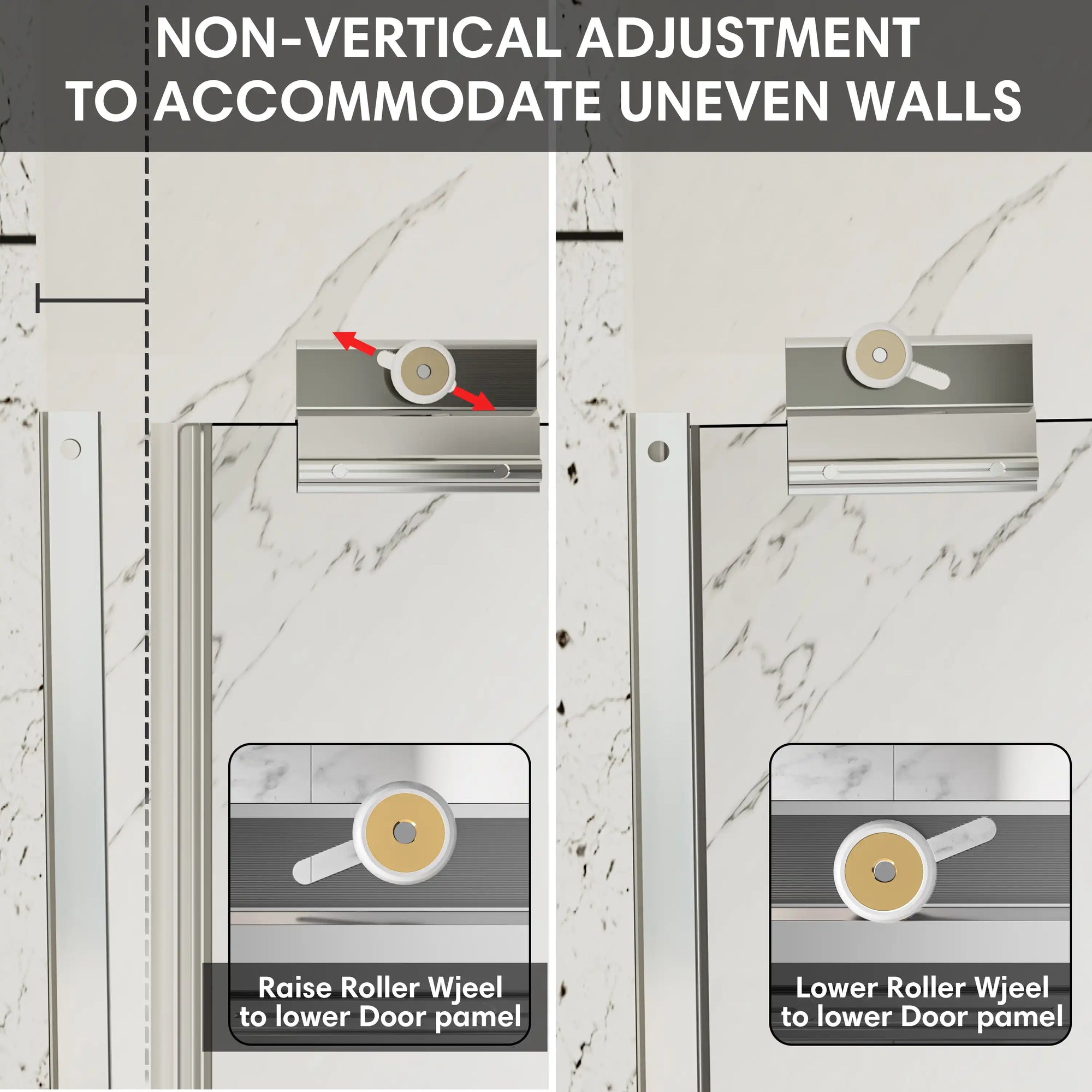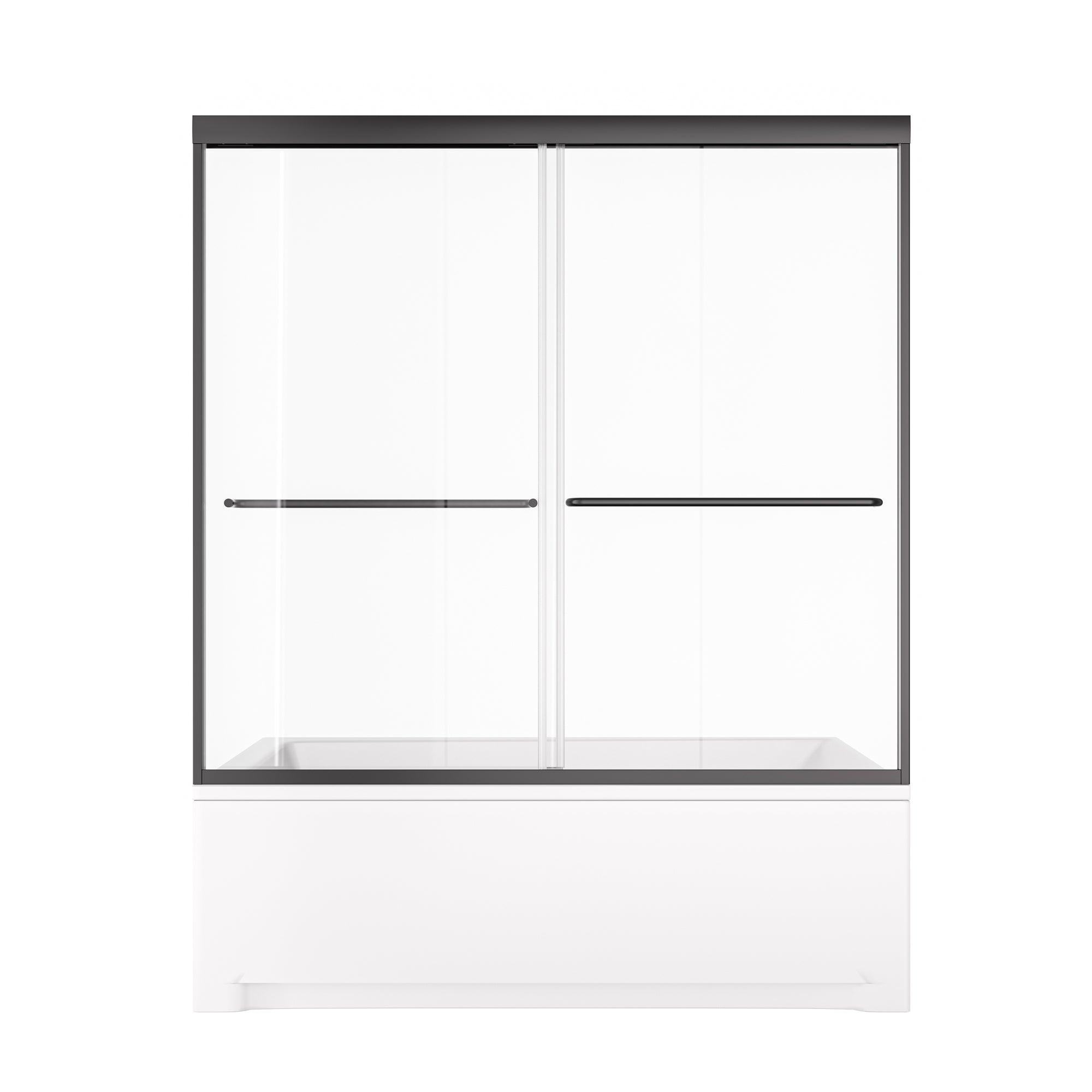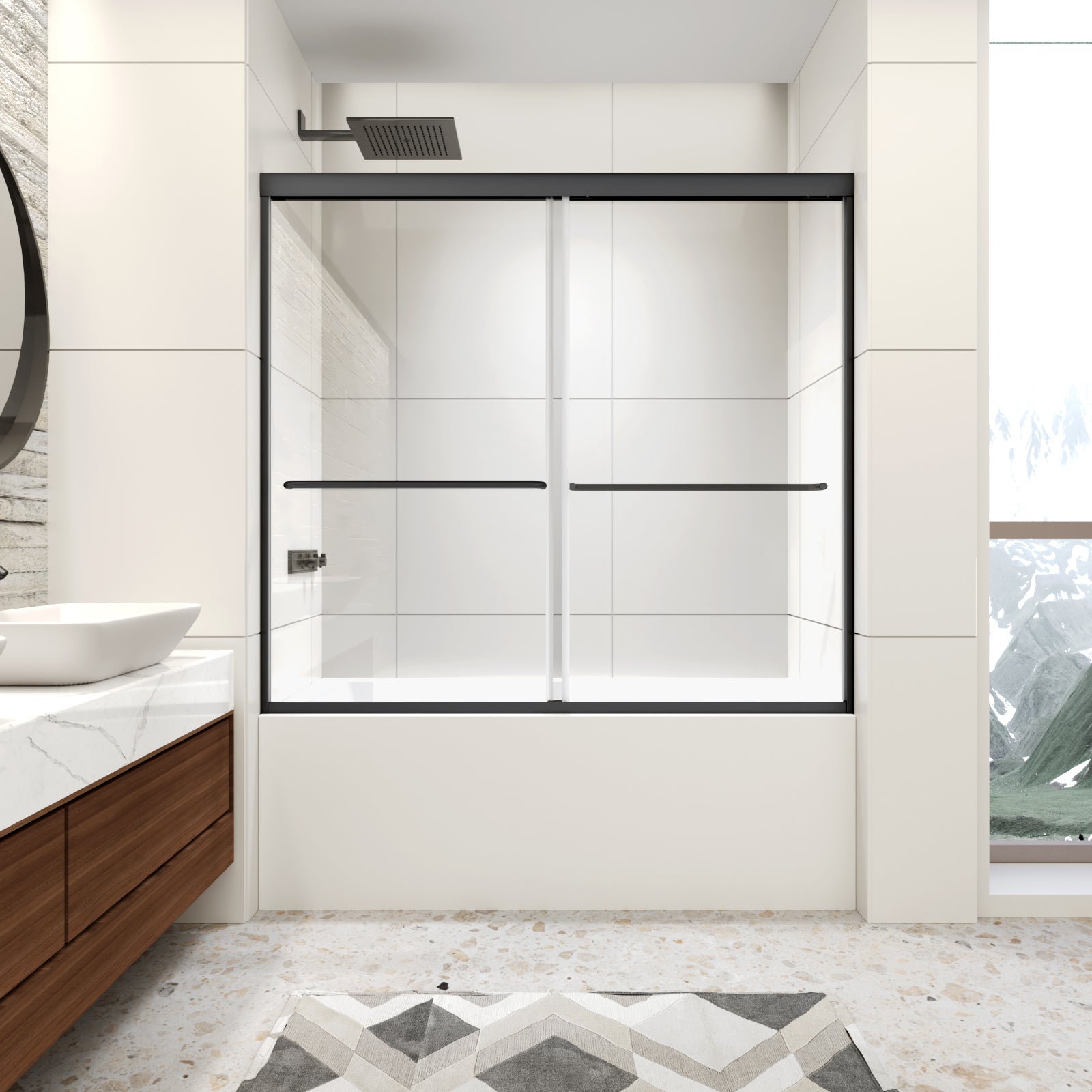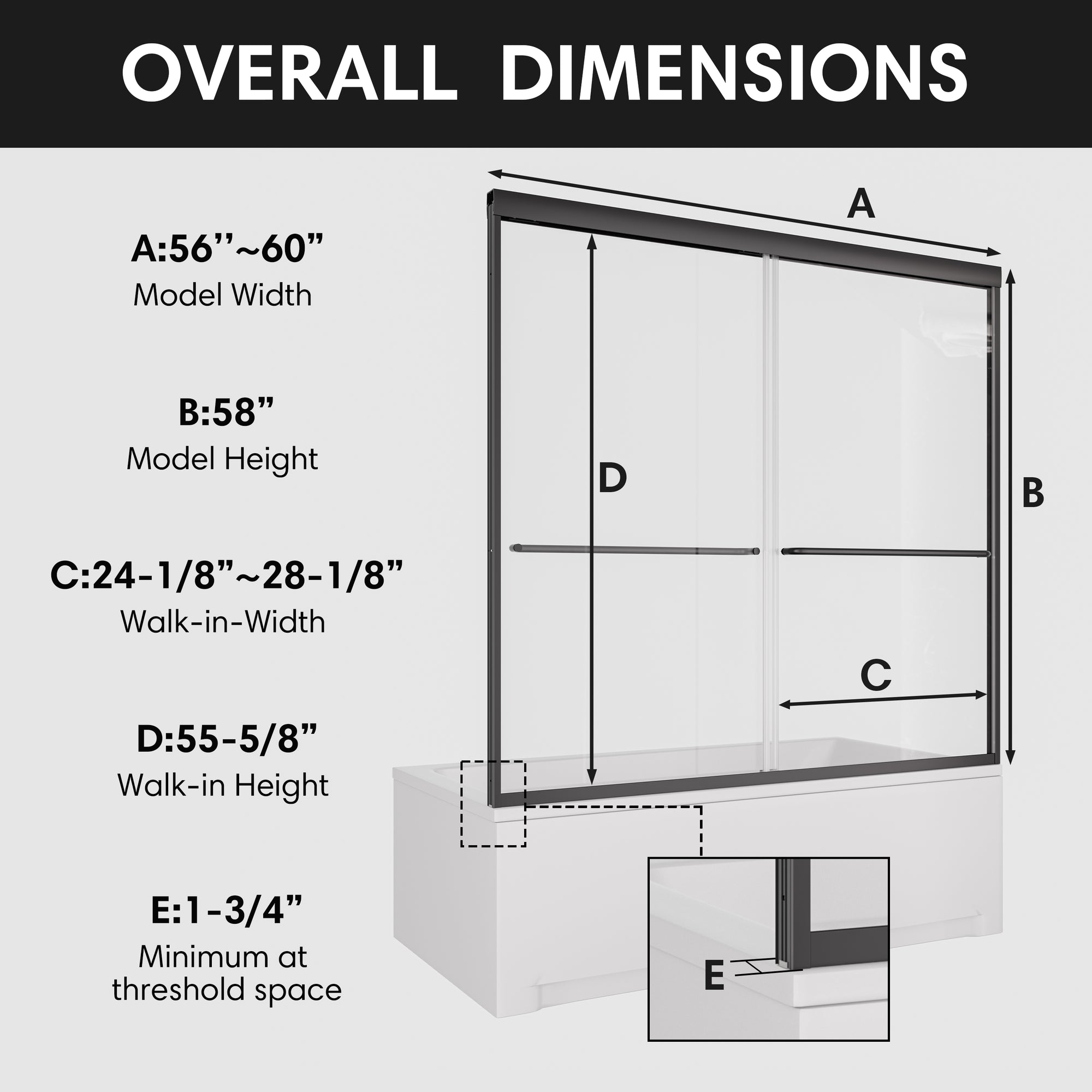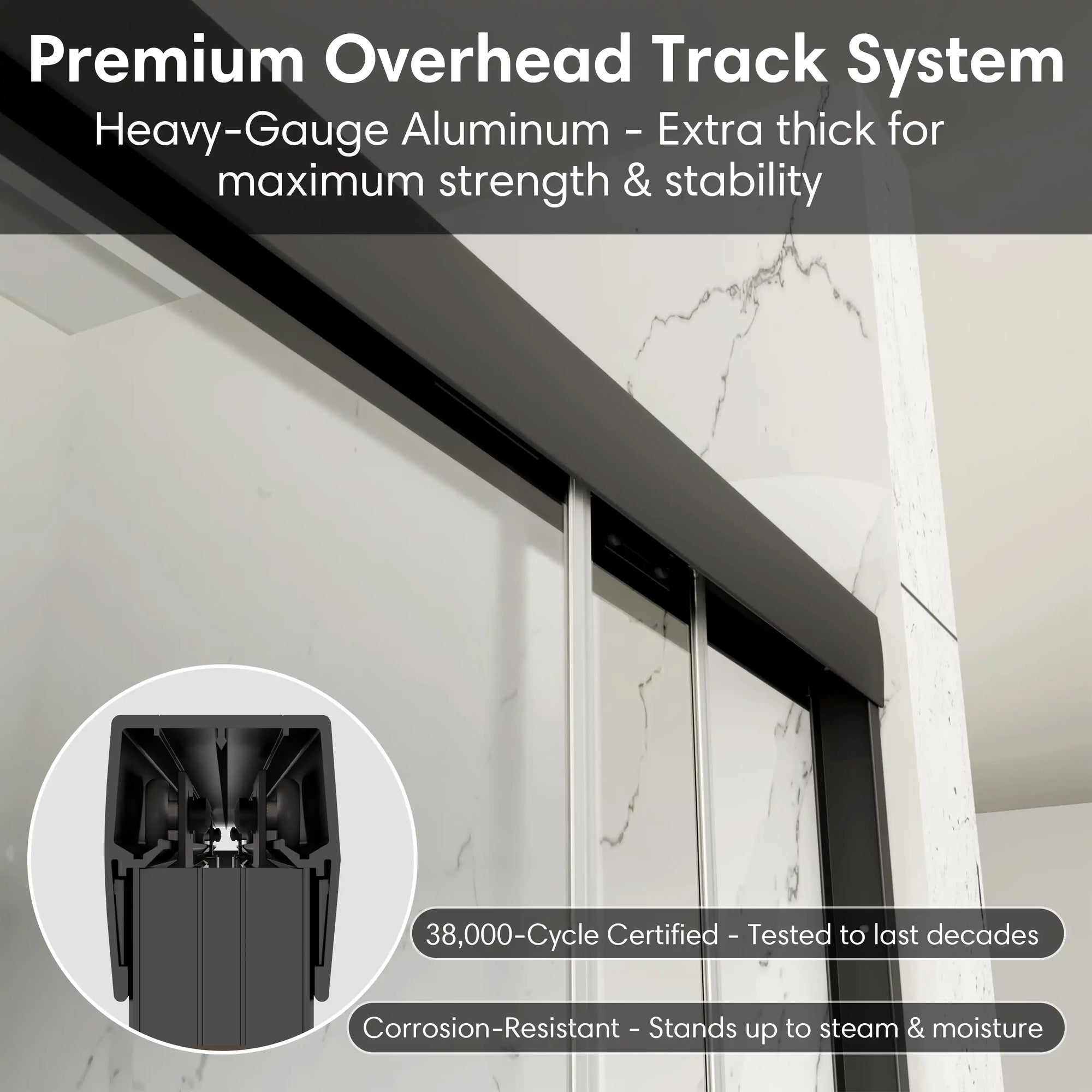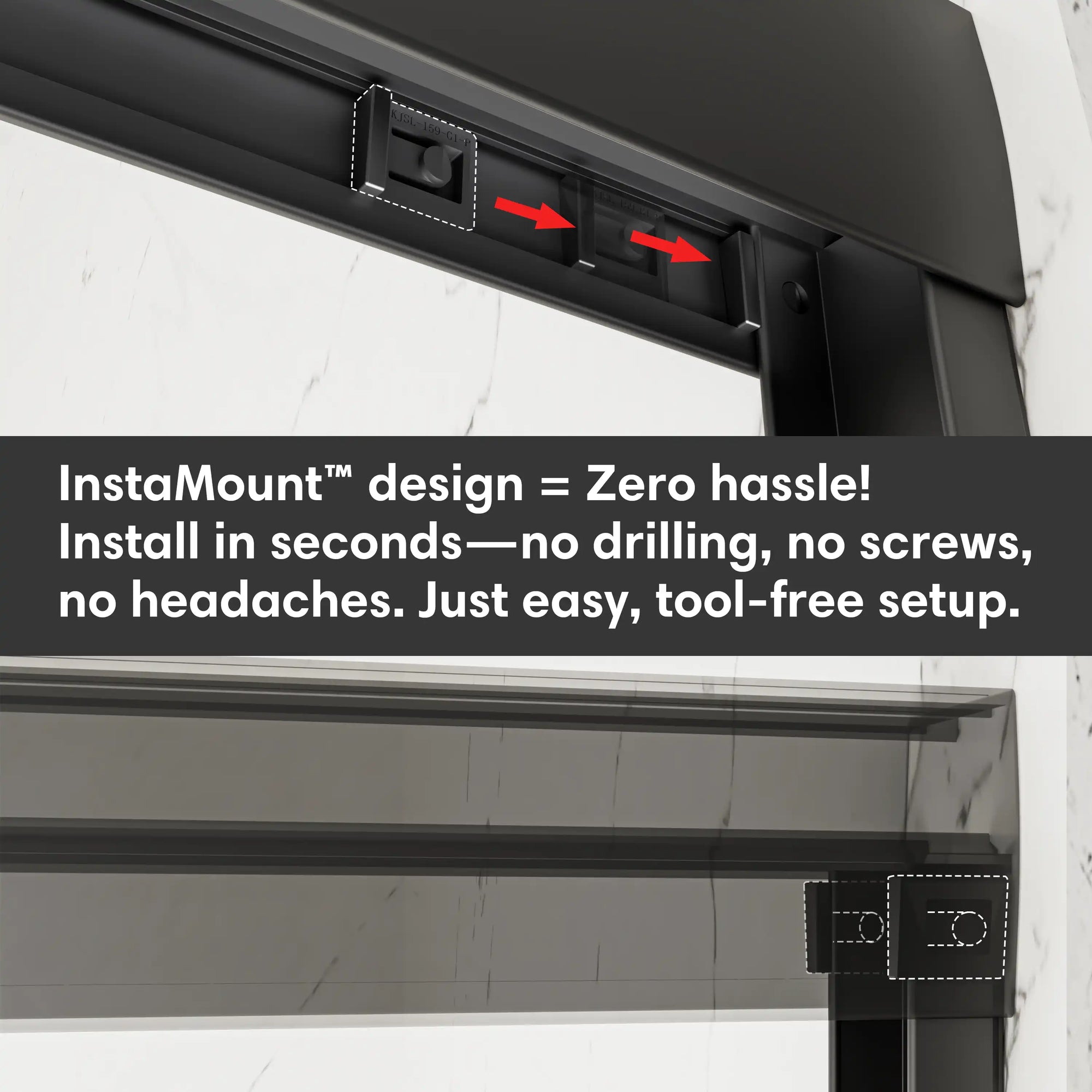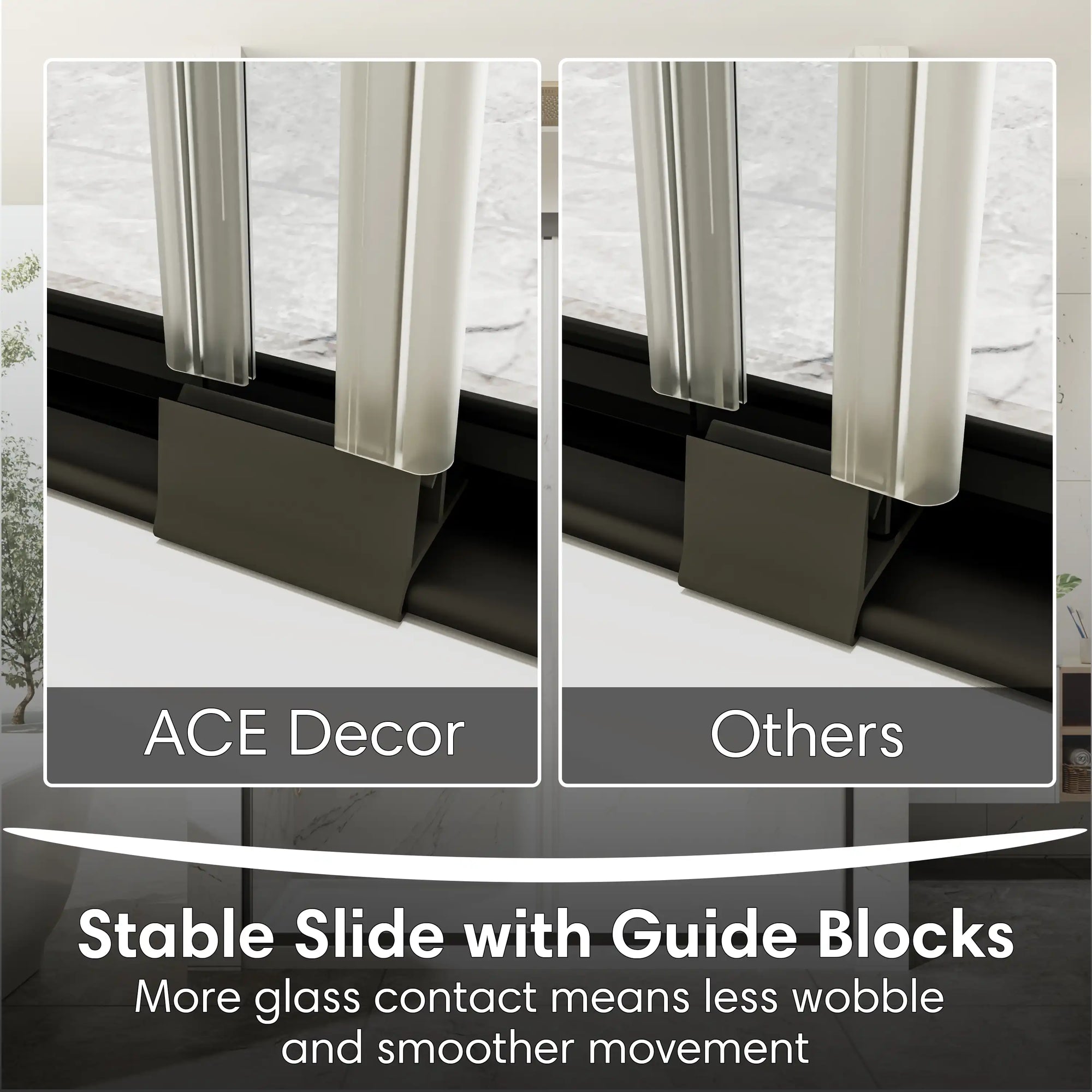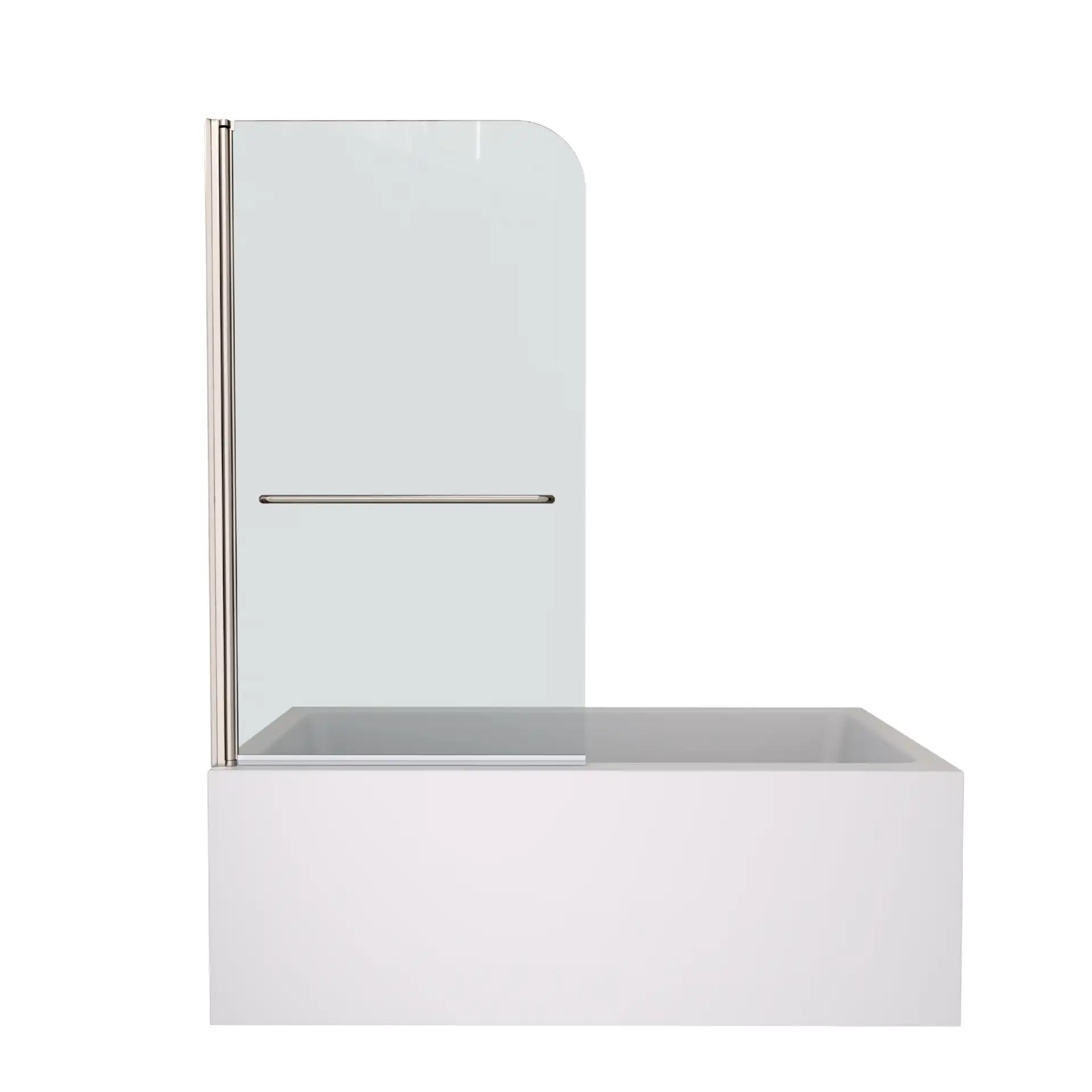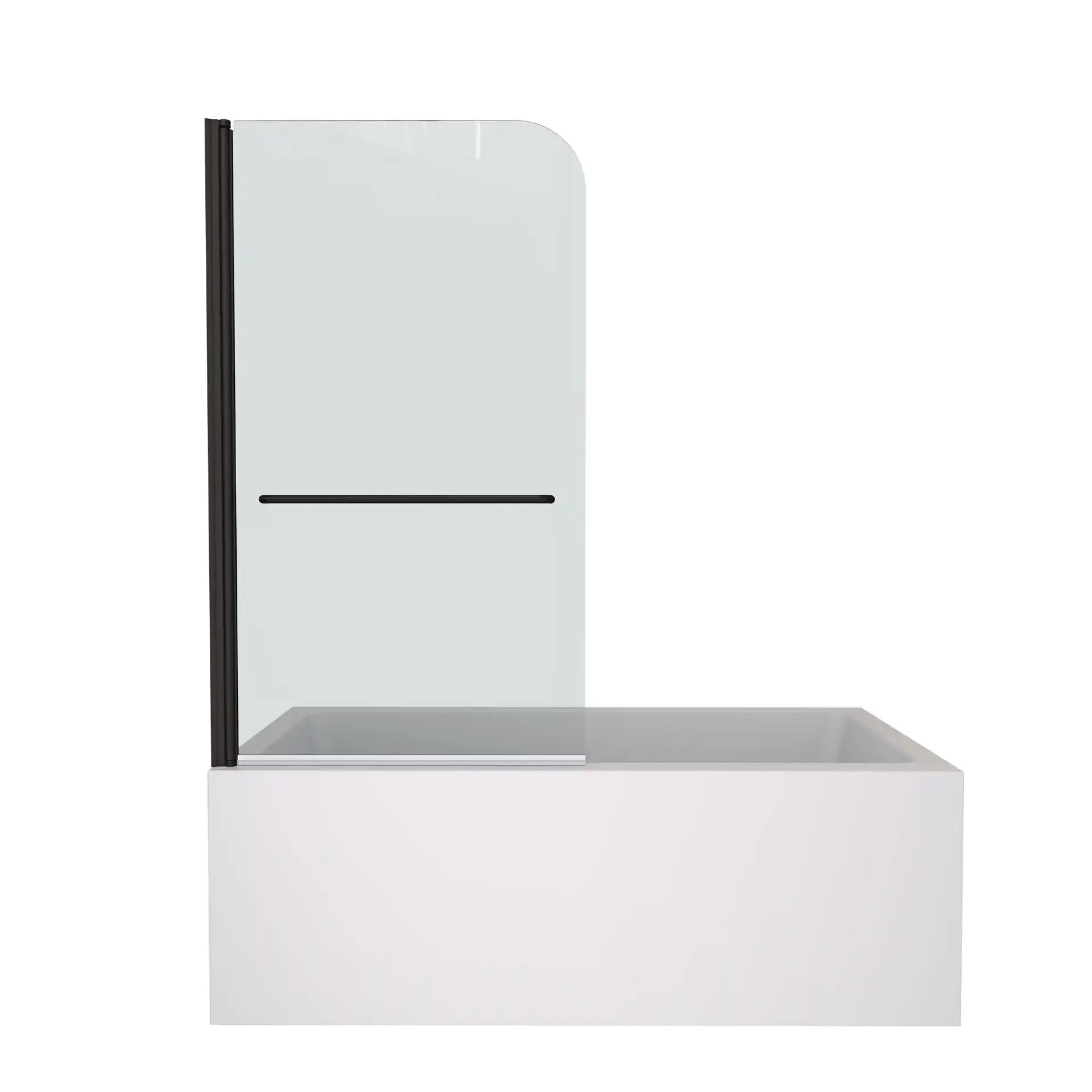So which should you go with? This guide covers what you need to know about the most important differences — from spatial economy and installation costs to design trends and long-term resale value — so that you can make an informed decision that fits your lifestyle and your bathroom layout.
Table of Contents:
- Spatial Elegance
- Installation & Cost
- Luxury vs. Functionality
- Design Impact
- Resale Value & Trends
- Conclusion
- FAQ
Spatial Elegance: How Alcove and Freestanding Tubs Define Your Bathroom Layout
First and foremost is how each option affects the layout of your bathroom, one of the most mysterious yet decisive aspects of choosing between a deep alcove bathtub and a freestanding model.
Alcove tubs, tucked cozily between three walls, are the ultimate space-savers — perfect for petite bathrooms or those that don’t have all the square footage to spare. Their built-in design enables you to maximize precious floor space, which allows even small bathrooms to feel open and airy. (And if you opt for a deep alcove bathtub with low-profile ledge, it can serve as a shower base, too.)
Freestanding tubs, in contrast, require more space. Although they make for a striking focal point, they need to be placed strategically — ideally in the center or up against one wall — in order to preserve flow. If your master bath is large, a freestanding tub can transform the space into a spa-like retreat. However, in close quarters, it may come across as obstructive instead of elegant.
Takeaway: A deep alcove bathtub puts a functional yet stylish setup in a small square footage. For bigger baths that prioritize looks over all else, a freestanding tub makes a statement.

Installation & Cost: The Hidden Factors You Should Consider
Aside from looks, the installation process — and its cost — has a lot to do with your decision.
A deep alcove bathtub is usually simpler and much cheaper to install, as it’s just dropped into a pre-existing three-wall nook. The plumbing is basic because it connects to all common shower systems. The only extra costs would be tiling or maybe a bespoke surround, depending on the finish you wanted.
Installing freestanding tubs involves more work up front. Their placement has to take into account plumbing rerouting, because pipes can’t be hidden in walls. This often involves bringing in a pro, which drives up labor costs. Moreover, freestanding tubs are best paired with floor-mounted faucets, which can cost more than conventional wall-mounted taps.
For a budget-friendly, no-fuss install, a deep alcove bathtub can be the most pragmatic choice. But if a spa-like statement piece is worth the added costs, you might be considering a freestanding tub.

Luxury vs. Functionality: Which Tub Aligns With Your Lifestyle?
While both varieties are sophisticated, they serve different lifestyles.
A deep alcove bathtub is practical at its best. It features a space-efficient, deep-soak design, but is still ergonomic enough for daily use. It’s also easier to clean around; there are no hidden crevices underneath the tub. Families with children value its stability — no climbing or accidental tipping.
Freestanding tubs are pure decadence. Their sculptural shapes — clawfoot or streamlined oval are the most popular — provide a level of bougie bathing that approach those for whom relaxation is paramount. However, their open sides can make cleaning beneath one as a challenge, and their higher sides may prove tricky for older users or young children to step into safely.
When you want the best of both -- everyday practicality and deep-soak indulgence -- a deep alcove bathtub is hard to beat. But if baths are your private retreat, freestanding models provide distinctive elegance.

Design Impact: Making a Statement vs. Seamless Integration
Design style typically determines if homeowners gravitate toward an alcove or freestanding tub.
A deep alcove bathtub offers a streamlined appearance that blends perfectly with minimalist or modern décor. As it fits into the walls, it can be outfitted with built-in shelving, niches or a seamless glass shower enclosure. This design choice is timeless and adaptable, so you can ensure your bathroom remains stylish for many years to come.
Freestanding tubs, in contrast, are the showstoppers. Whether vintage-inspired or super modern, they make an instant statement centerpiece. But their visual weight requires complementary design elements — statement lighting, bold flooring, dramatic window placements, for example — to prevent an appearance of discord.
If building an effective cohesive design is more of a priority, a deep alcove bathtub could give you flexibility in your space. For those seeking an artistic statement, a freestanding tub does the trick.

Resale Value & Trends: What Future Home Buyers Love
Finally, think about how your choice will impact your home’s marketability.
The standard alcove tub is still the most widely used for resale flexibility. Their efficiency is attractive to families and downsizers, so you will have a wide pool of buyers. A spacious alcove bathtub with stylish fixtures can feel just as high-end as a freestanding model.
Freestanding tubs convey high-end appeal, but they can polarize buyers. Some love the lavishness, while others consider them to be a folly of space or impractical. If you’re worried about resale, keeping the freestanding part in a well-sized, well-designed master bath means you’ll likely retain broad appeal.

Conclusion: Finding Your Perfect Fit
There’s no generic solution for finding the perfect bathtub — it’s all about fine-tuning form and function to your specific needs. A deep alcove bathtub is the best of both worlds: Practical and space-saving while not compromising on deep-soaking bliss. It’s the intelligent option for busy homes, petite baths or anyone who appreciates low-maintenance luxury with minimal bother.
Then, freestanding tubs make a real statement, transforming your bathroom into a personal oasis — where every bath is a mini retreat. They’re great if you have enough square footage to lose and care about design as much as chilling out.
Remember: Investing in quality materials and professional installation will make sure your tub continues to be a centerpiece of comfort for years to come. Whether you choose an alcove, for streamlined efficiency, or a freestanding design, for sculptural beauty, the right tub should serve your practical needs, while turning your daily ritual into something transcendent. Your dream bath isn’t about filling space: It’s about the right experience.
FAQ
Q1: Can a deep alcove bathtub still feel luxurious?
Absolutely! Many high-end deep alcove bathtubs feature ergonomic slopes, generous depths, and premium materials like acrylic or stone composite for a spa-like experience.
Q2: Are freestanding tubs harder to maintain?
Slightly. Their open bases require regular cleaning underneath, whereas alcove tubs have fewer hidden spots for dust. However, freestanding tubs often use non-porous materials that resist stains.
Q3: Which tub style holds up better over time?
Both can be durable. Alcove tubs benefit from structural support, while quality freestanding tubs are built to last. Look for reinforced bases and scratch-resistant coatings.
Q4: Can I convert an alcove space into a freestanding setup?
Technically yes, but it’s complex.
Space-Smart Alcove Bathtub Ideas for Cozy Bathrooms
What Is the Best Bathtub? Your Complete Guide to Choosing the Right Tub
Best Shower Base Ideas 2025: Top 10 Options for Style and Function
